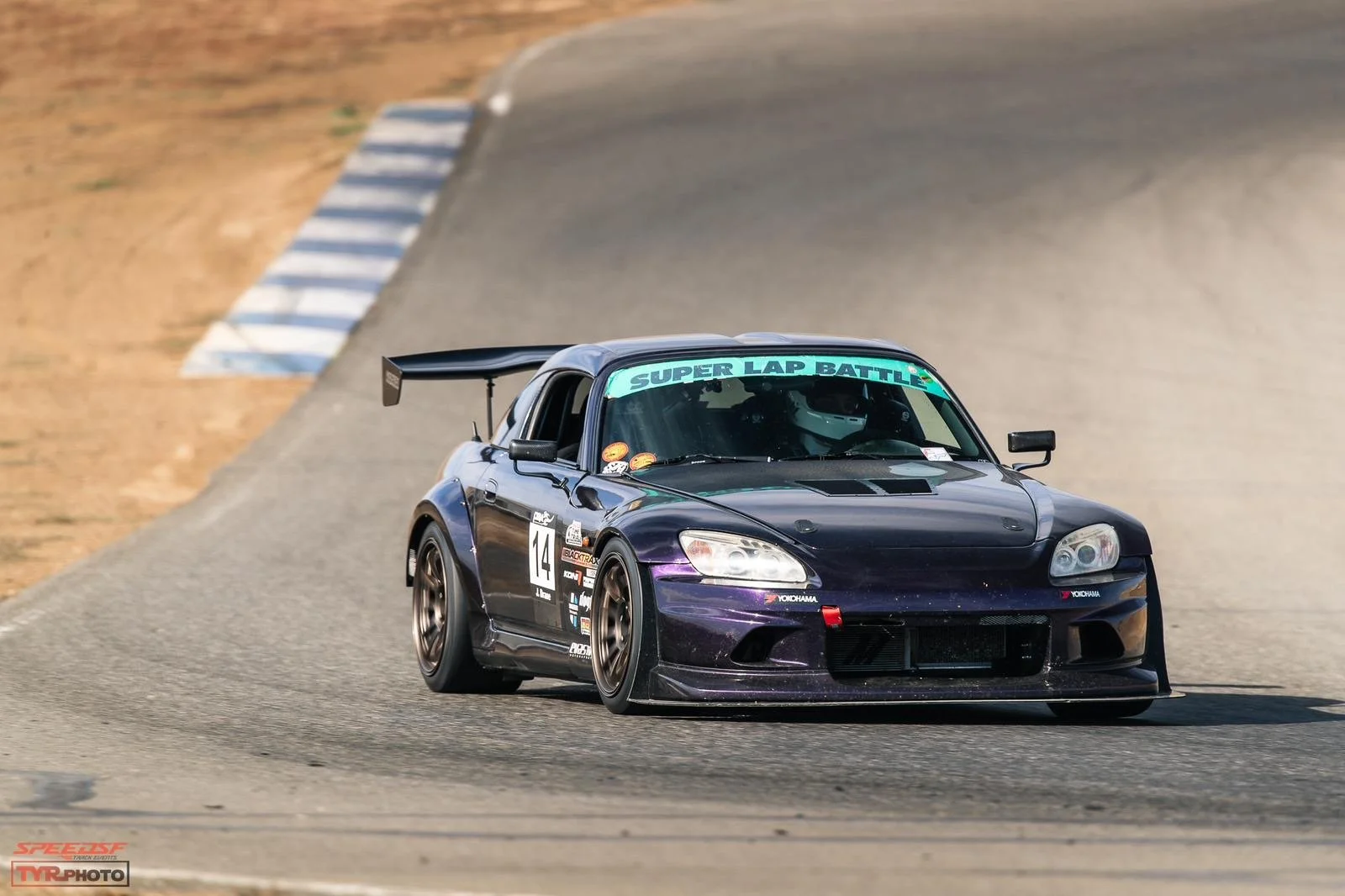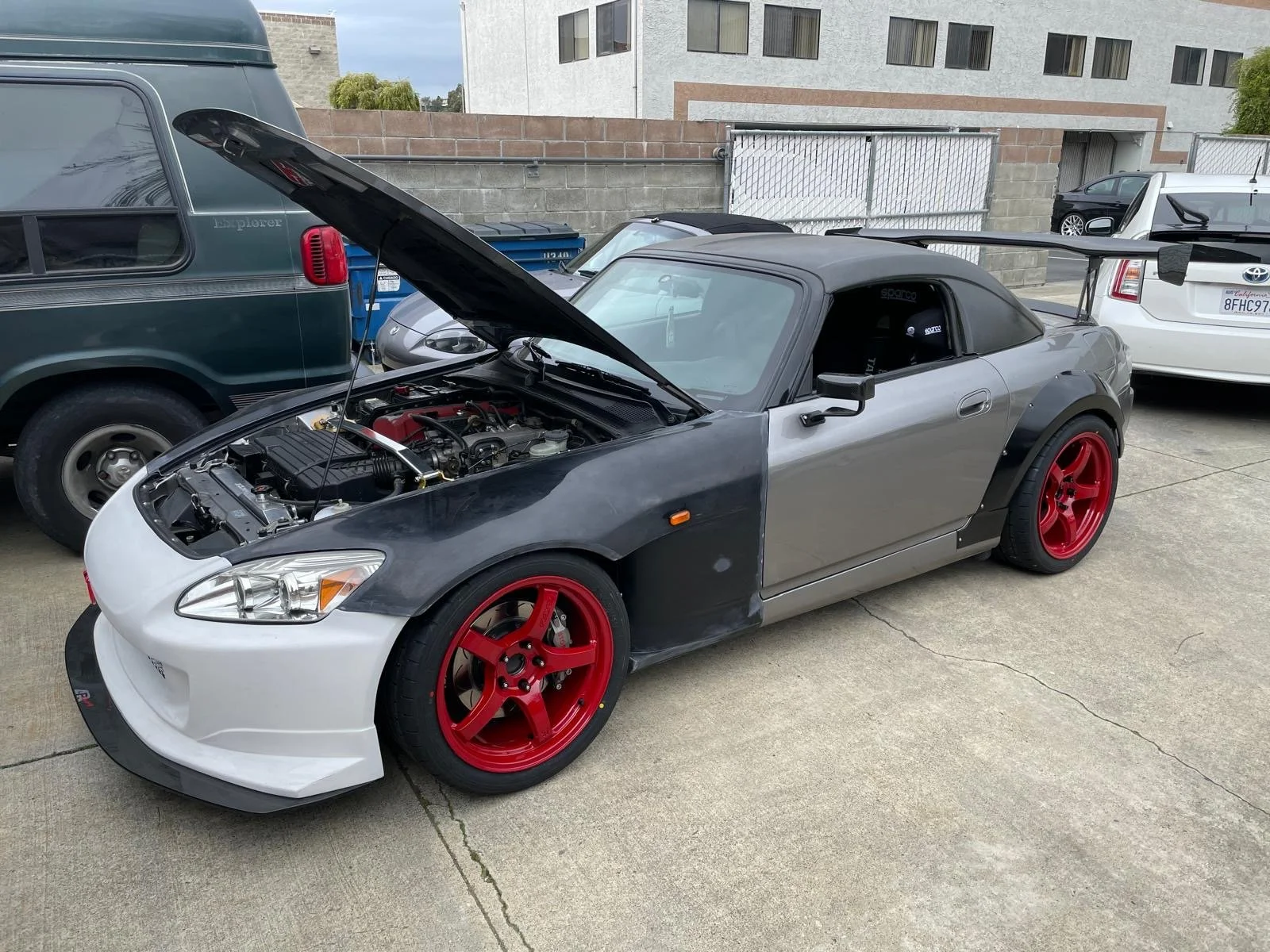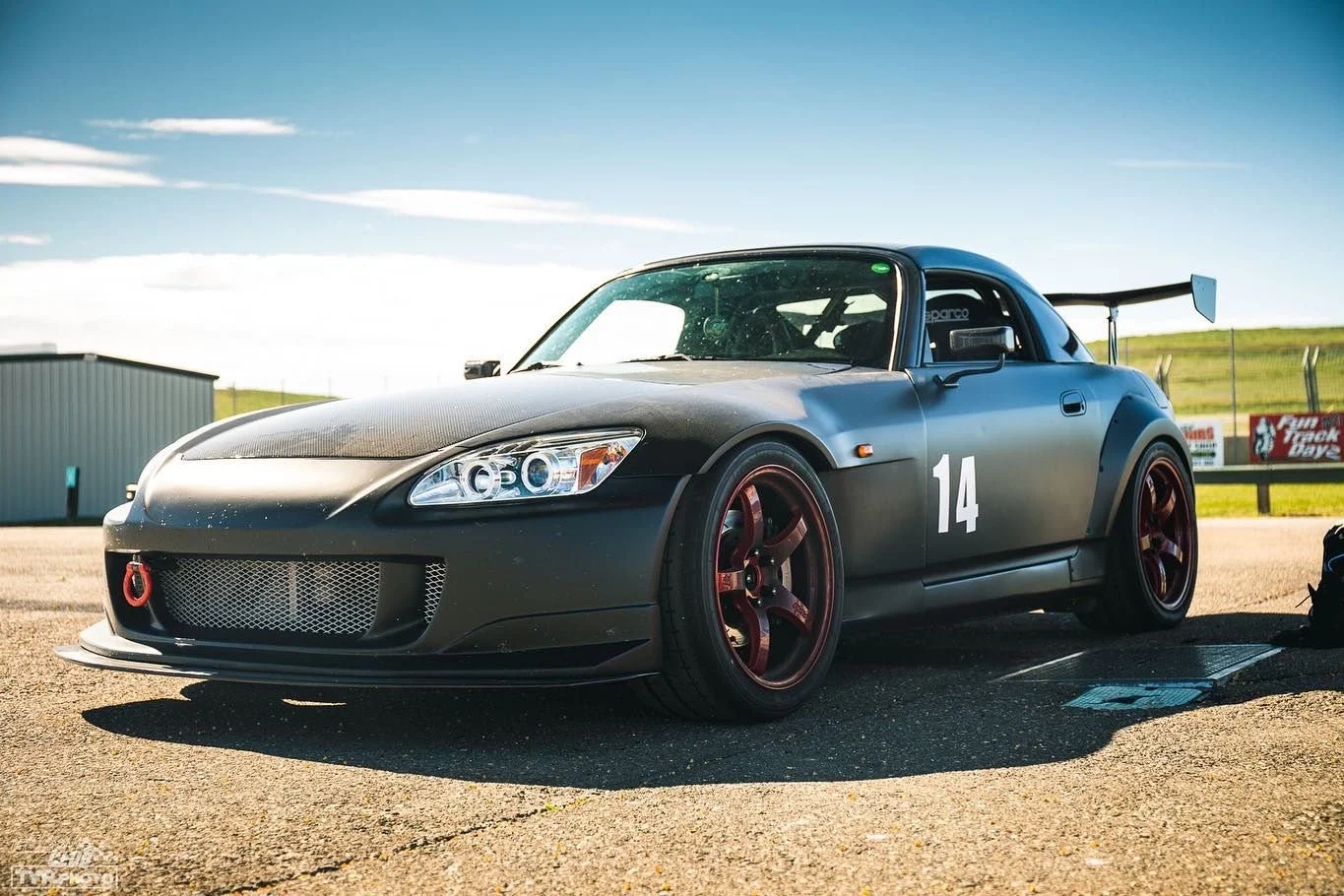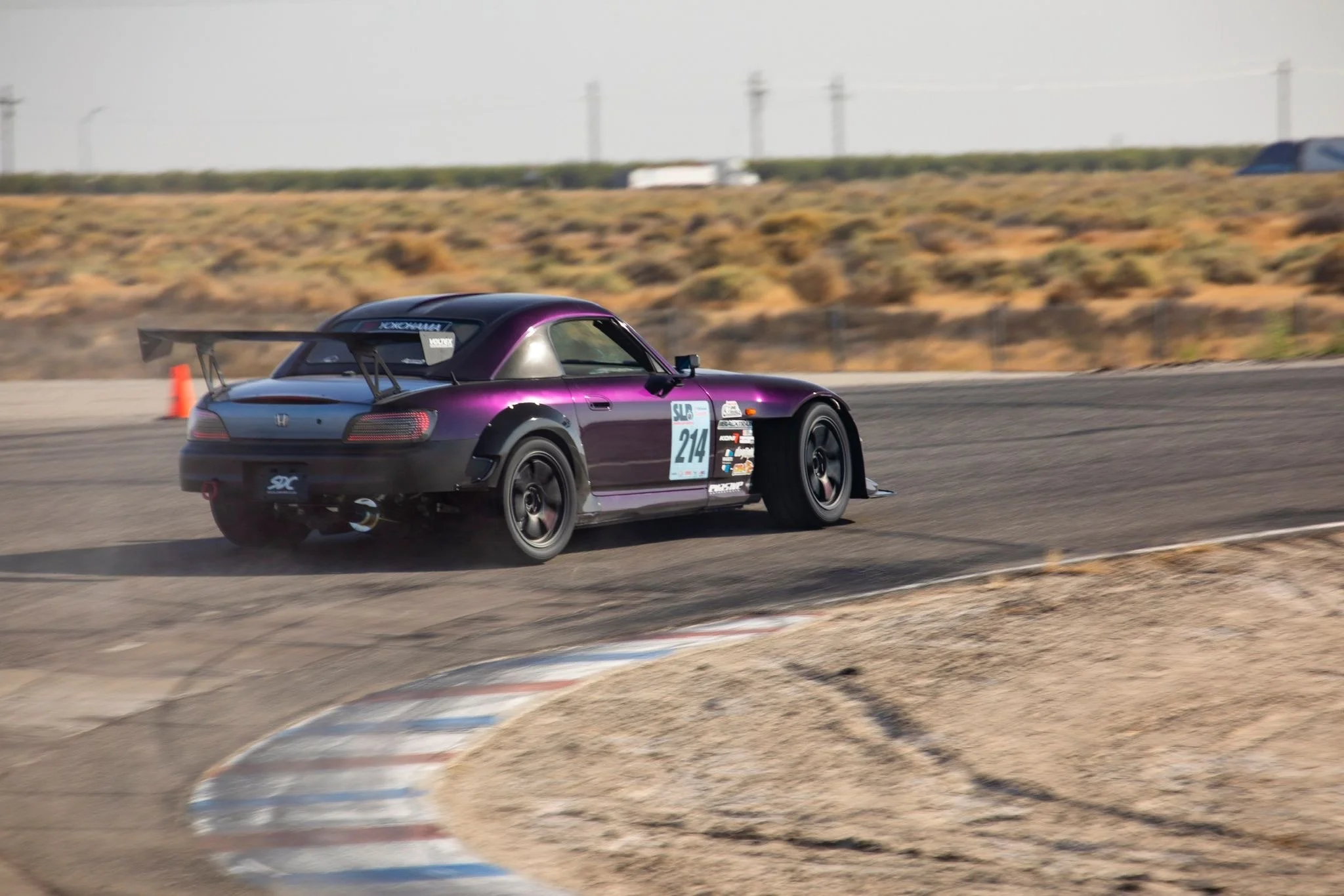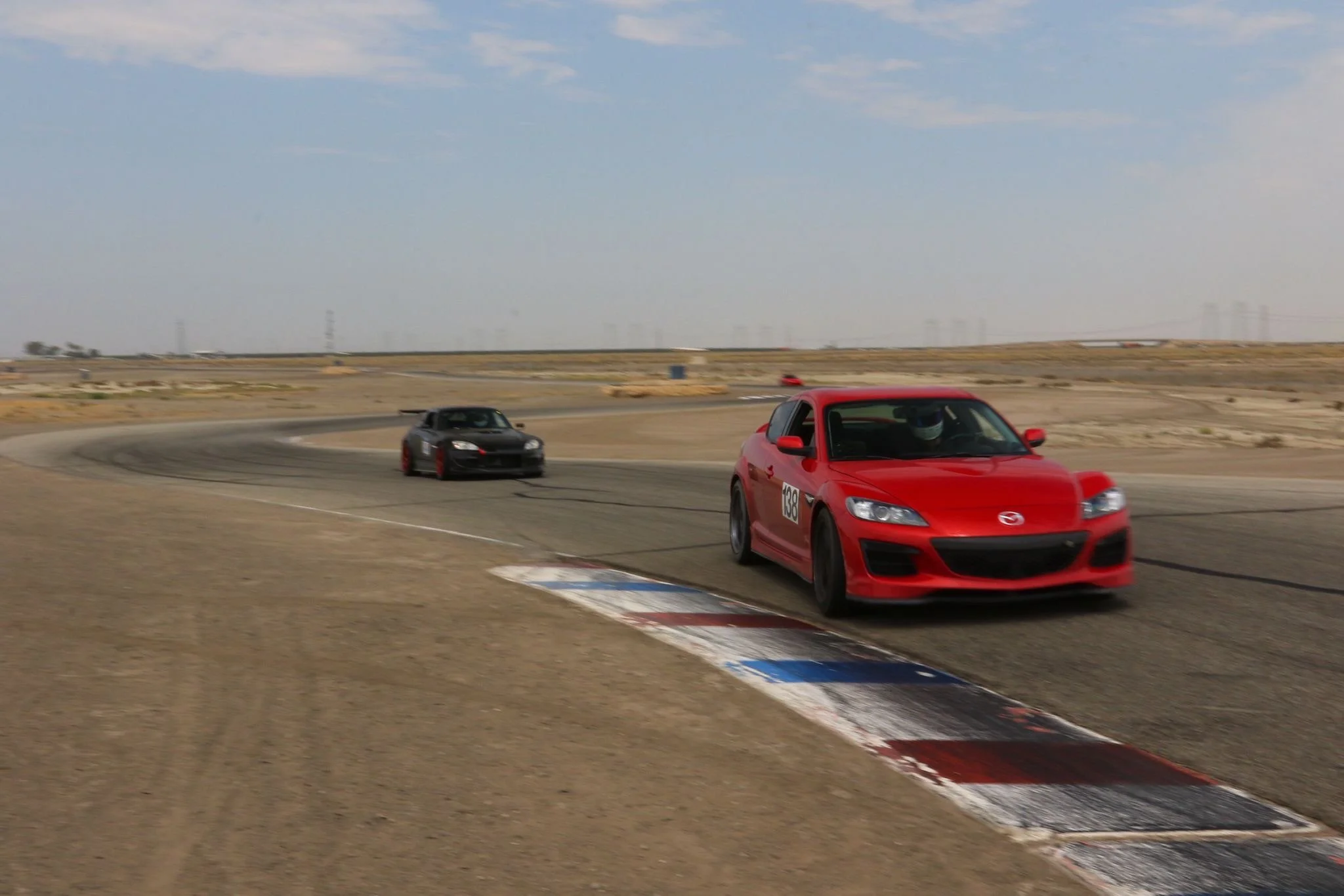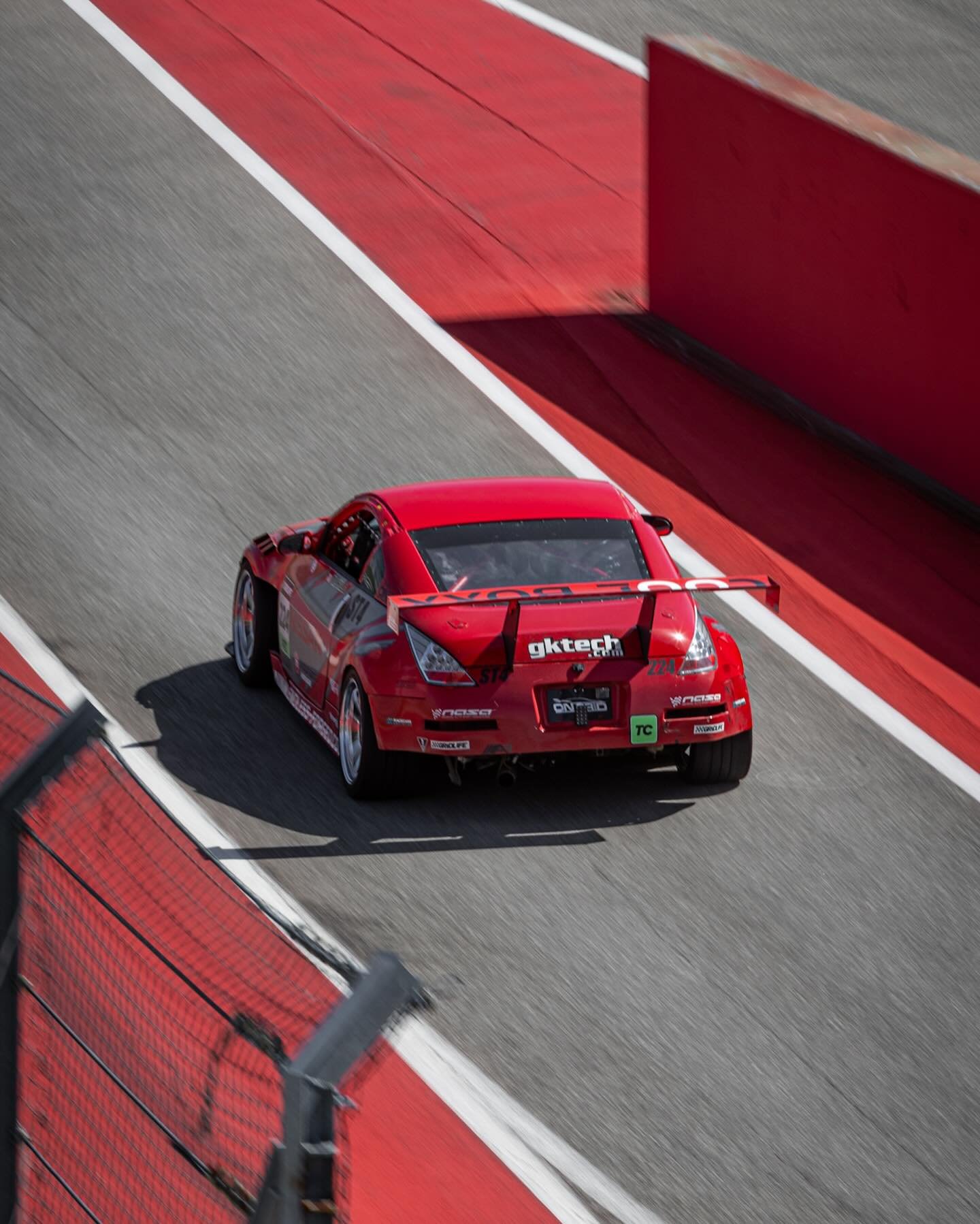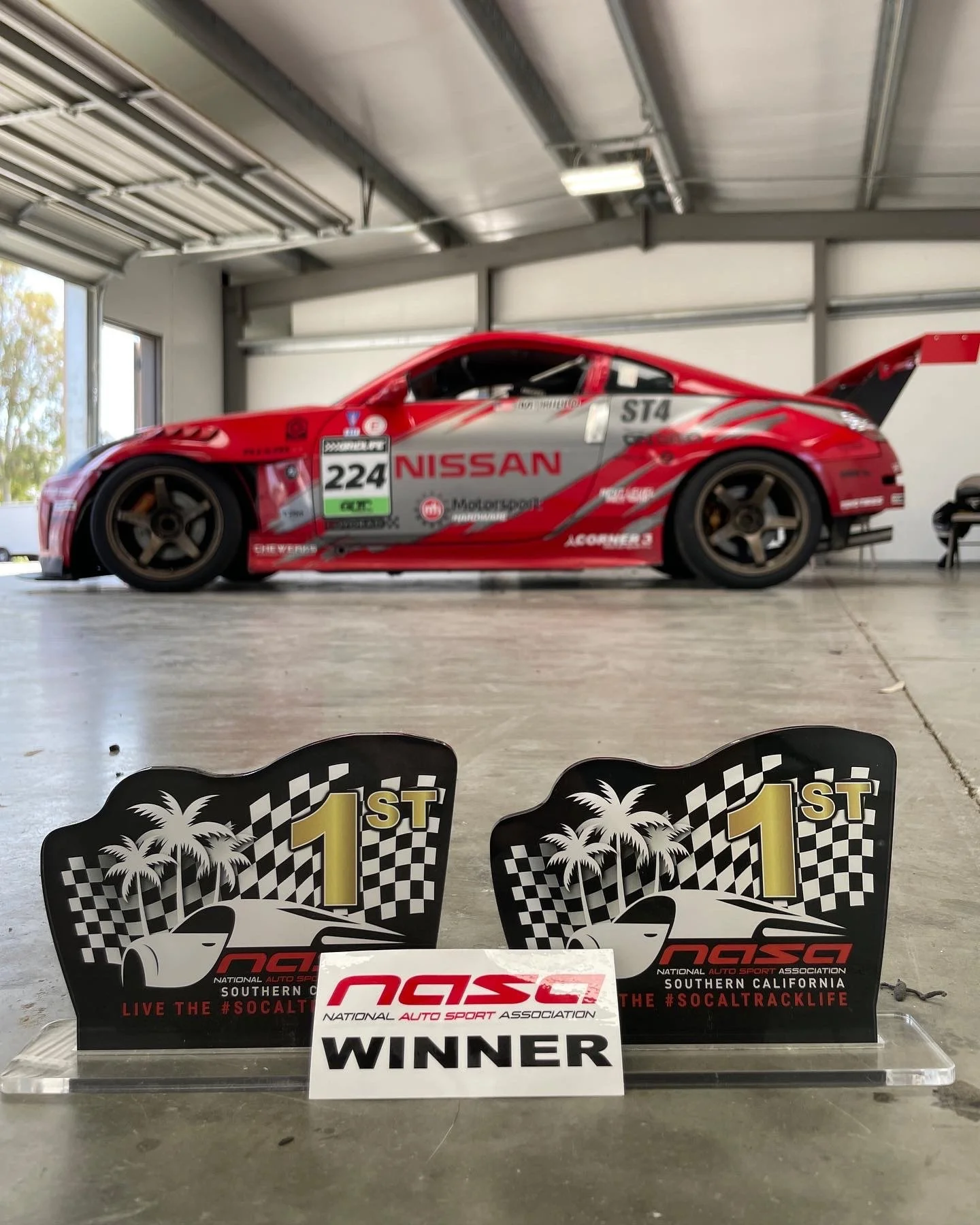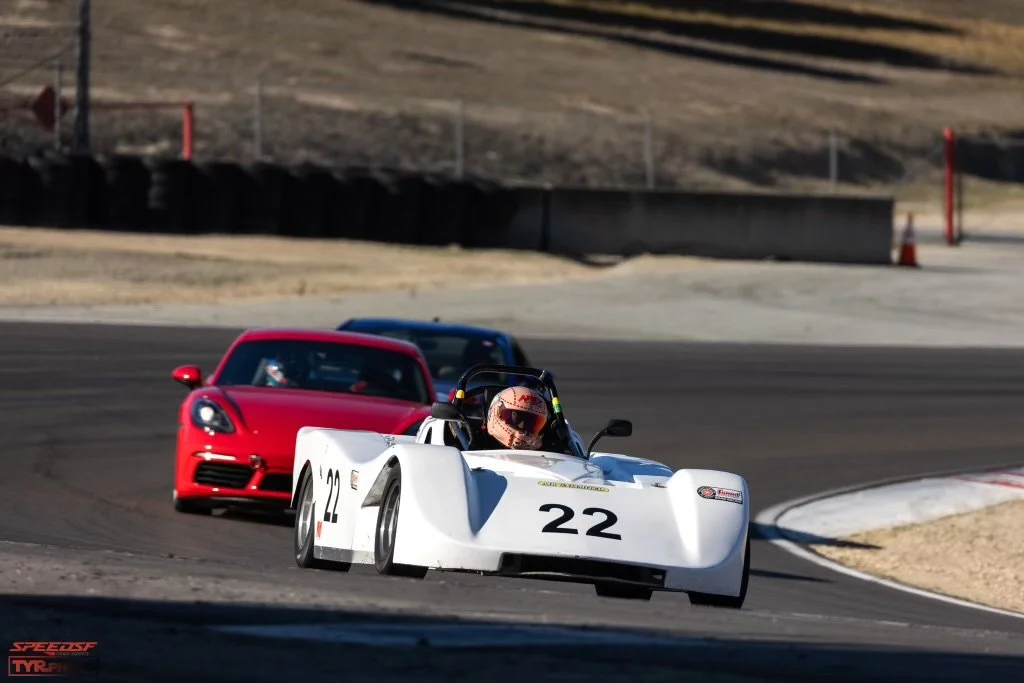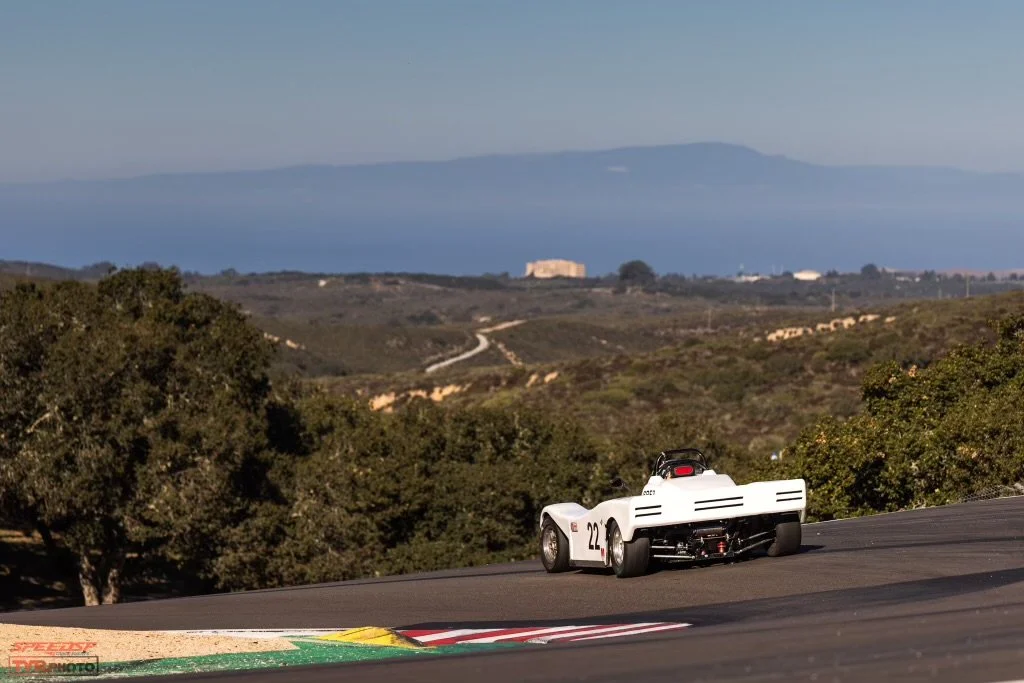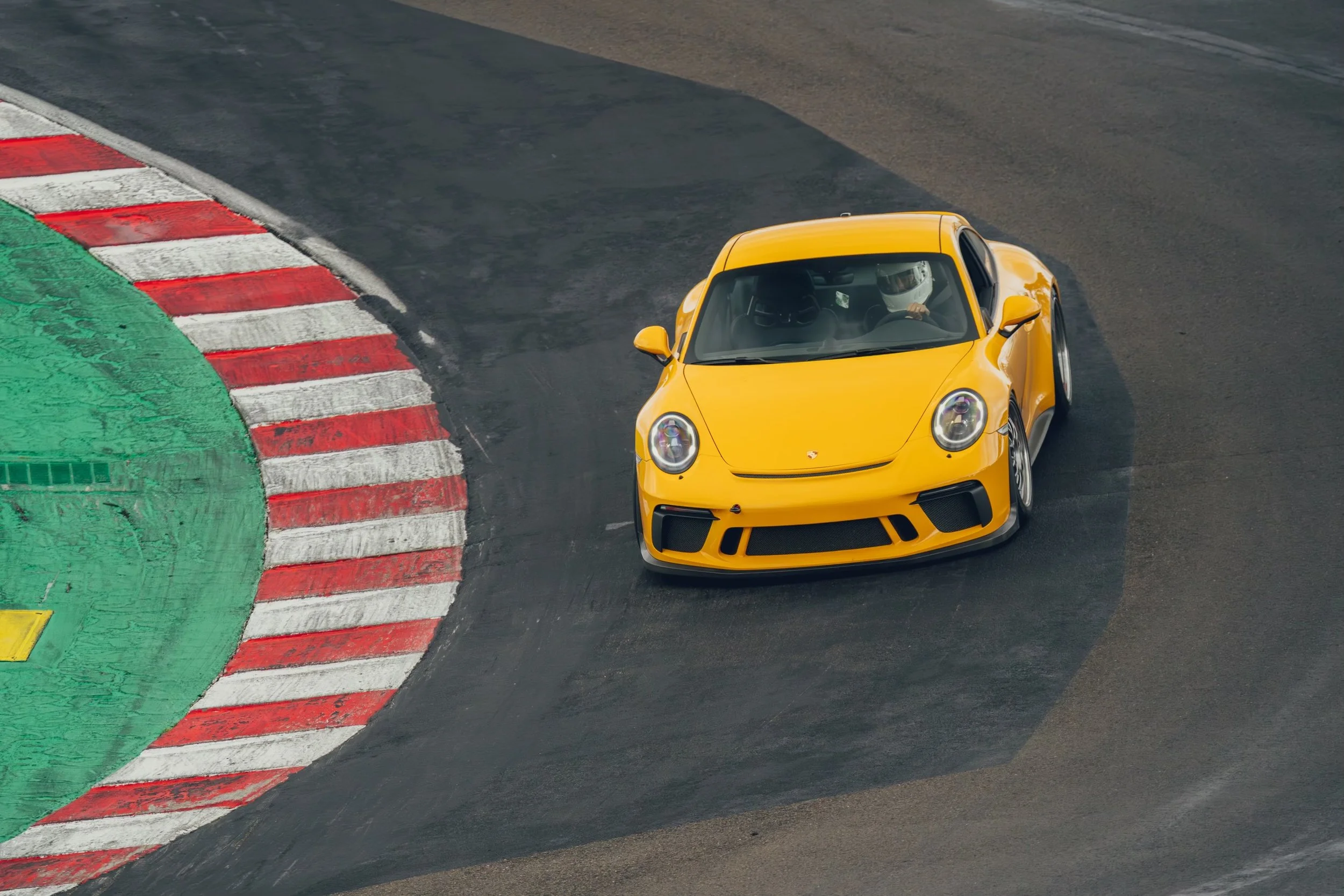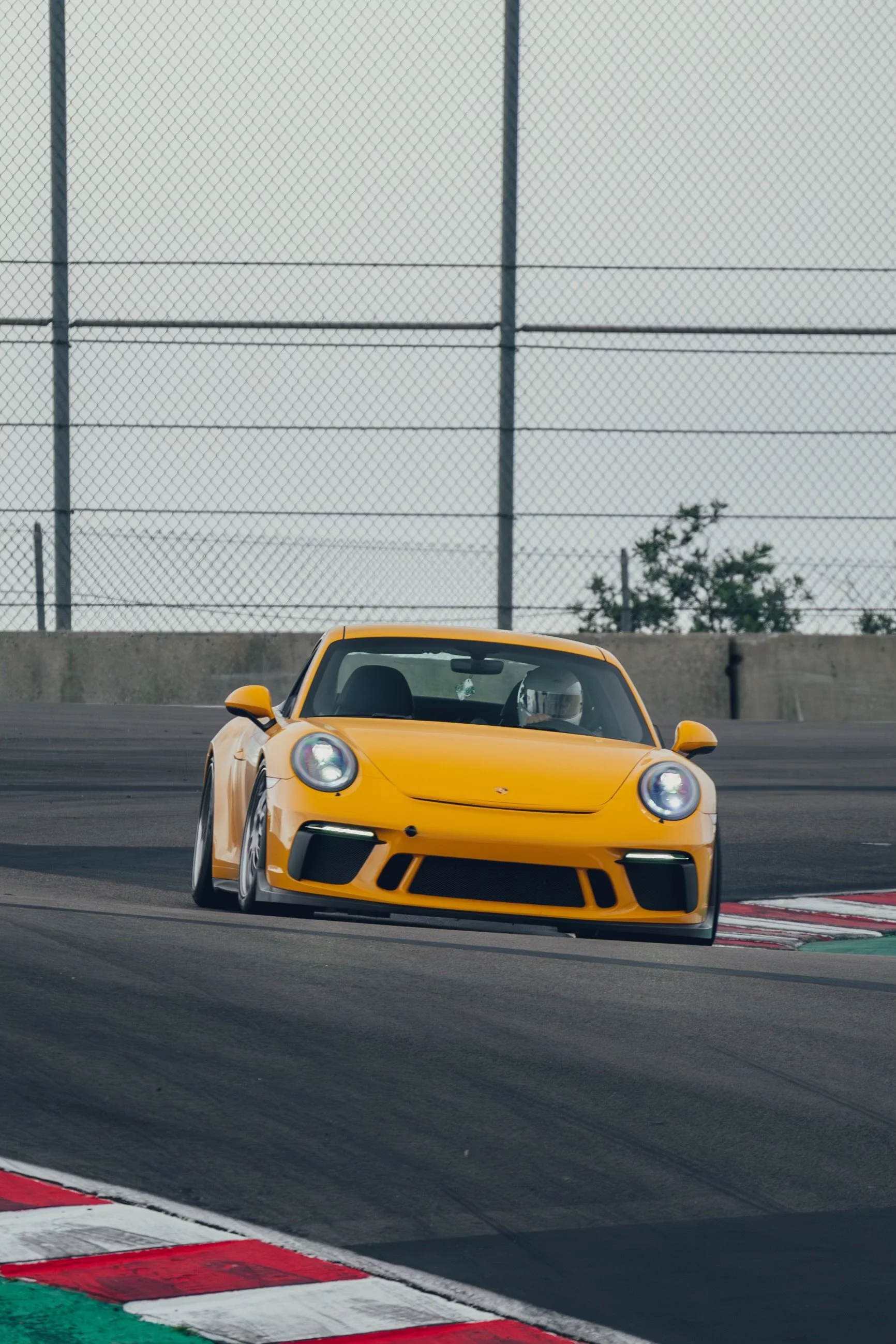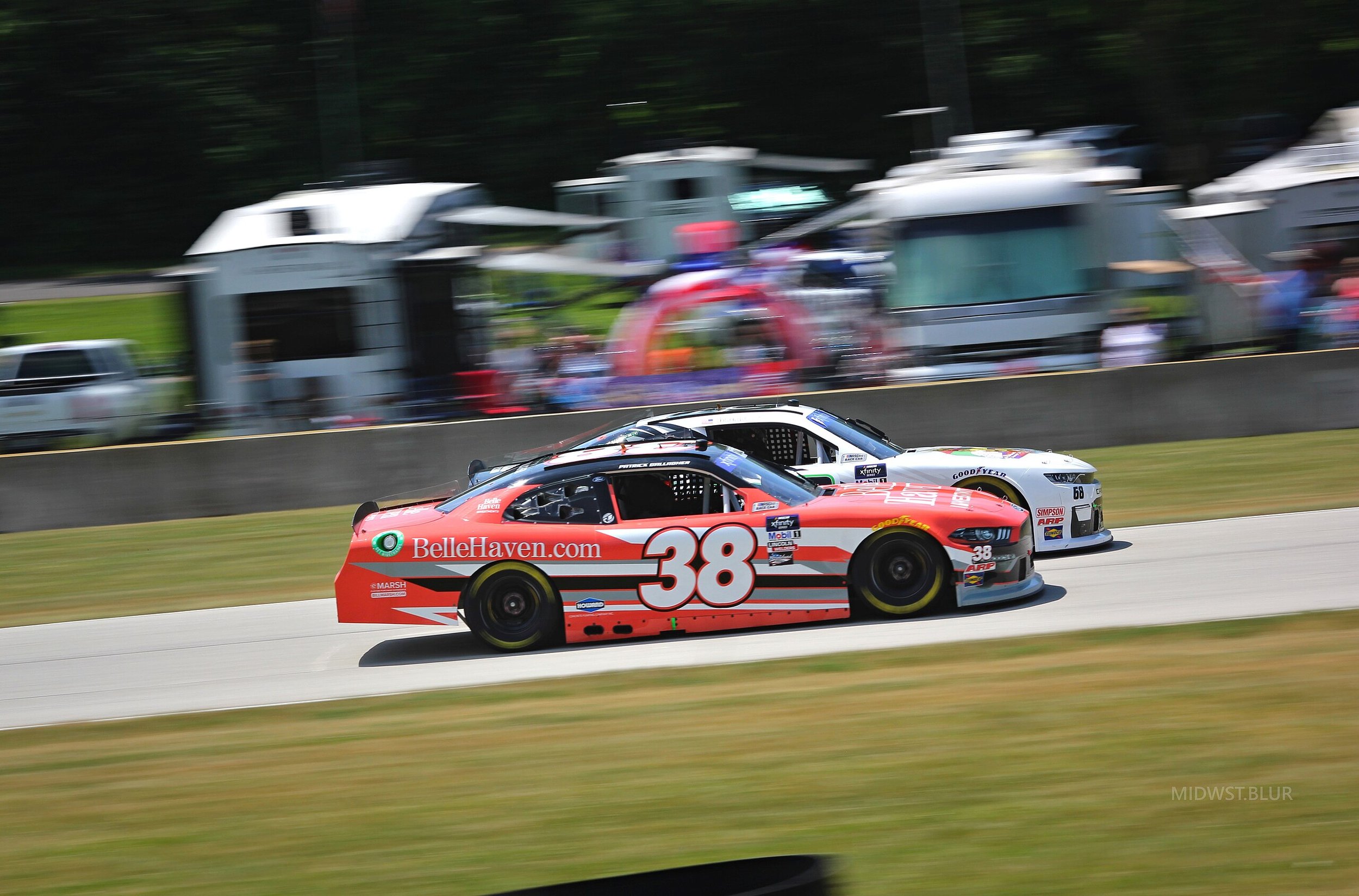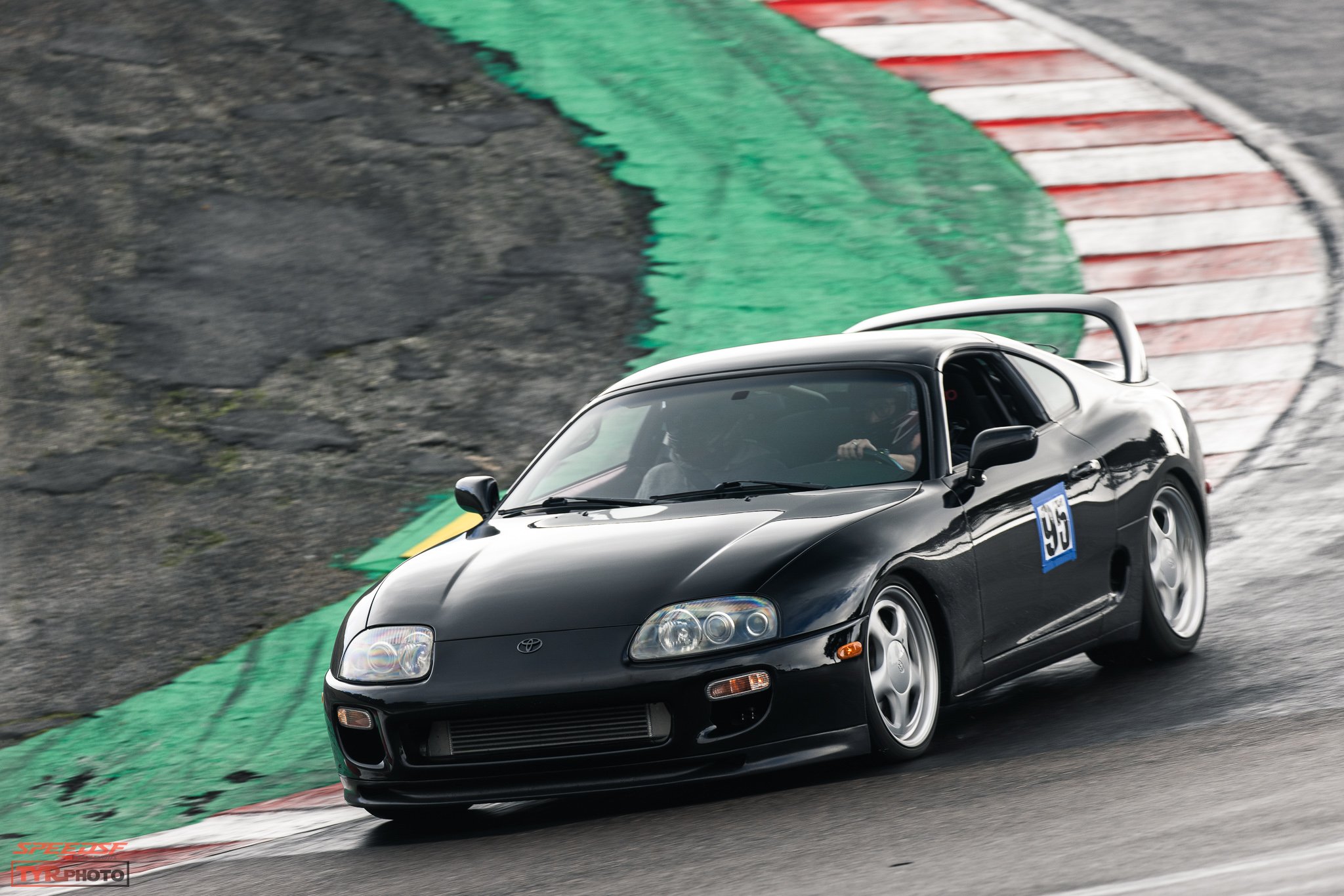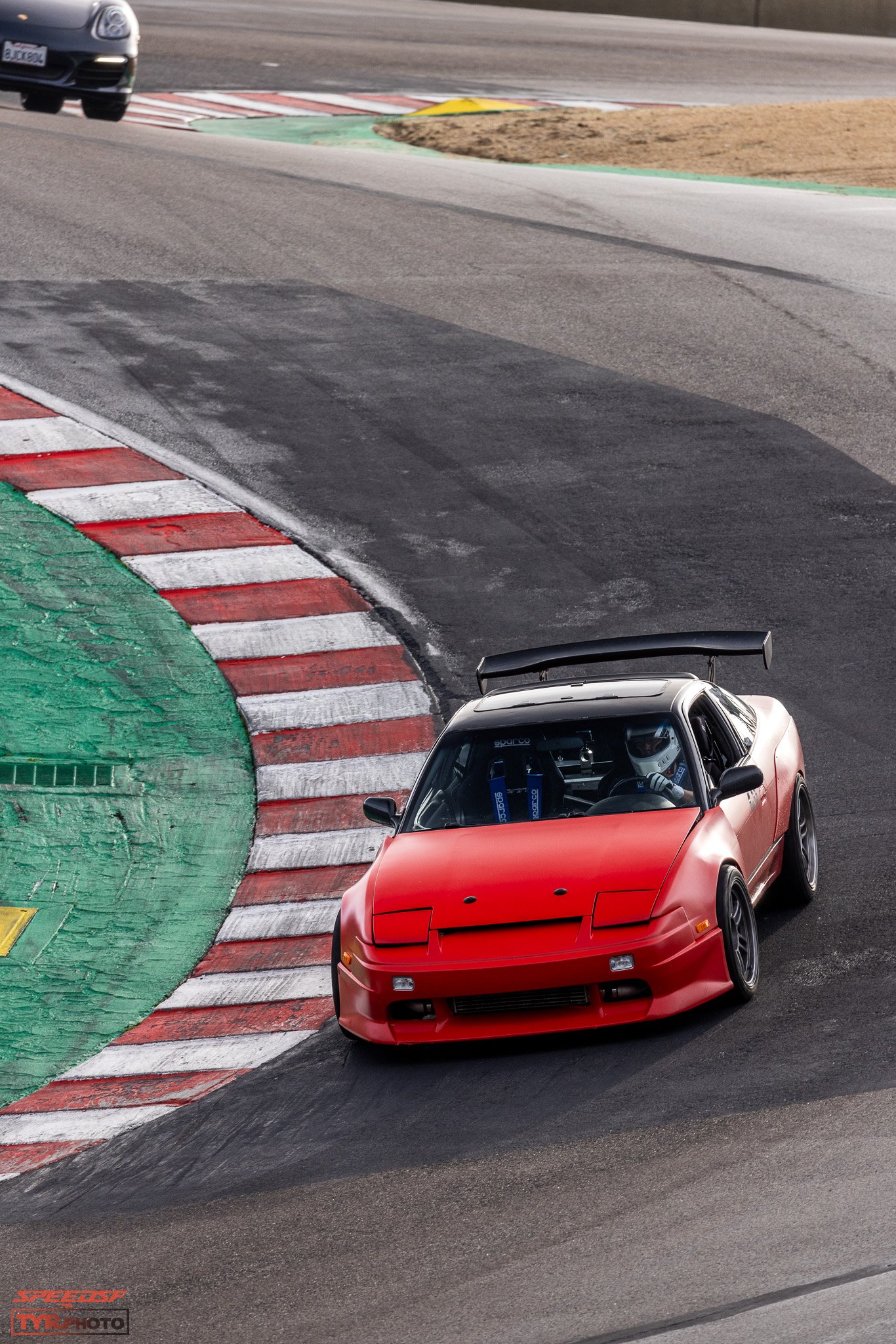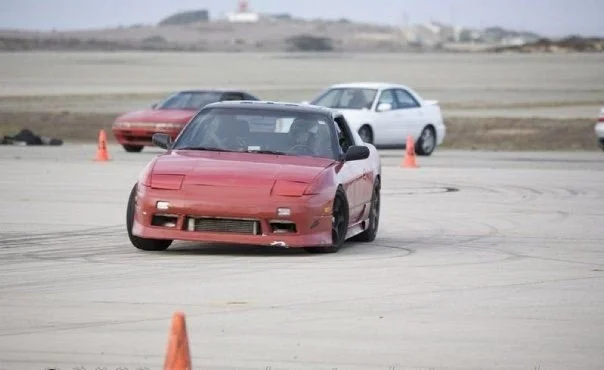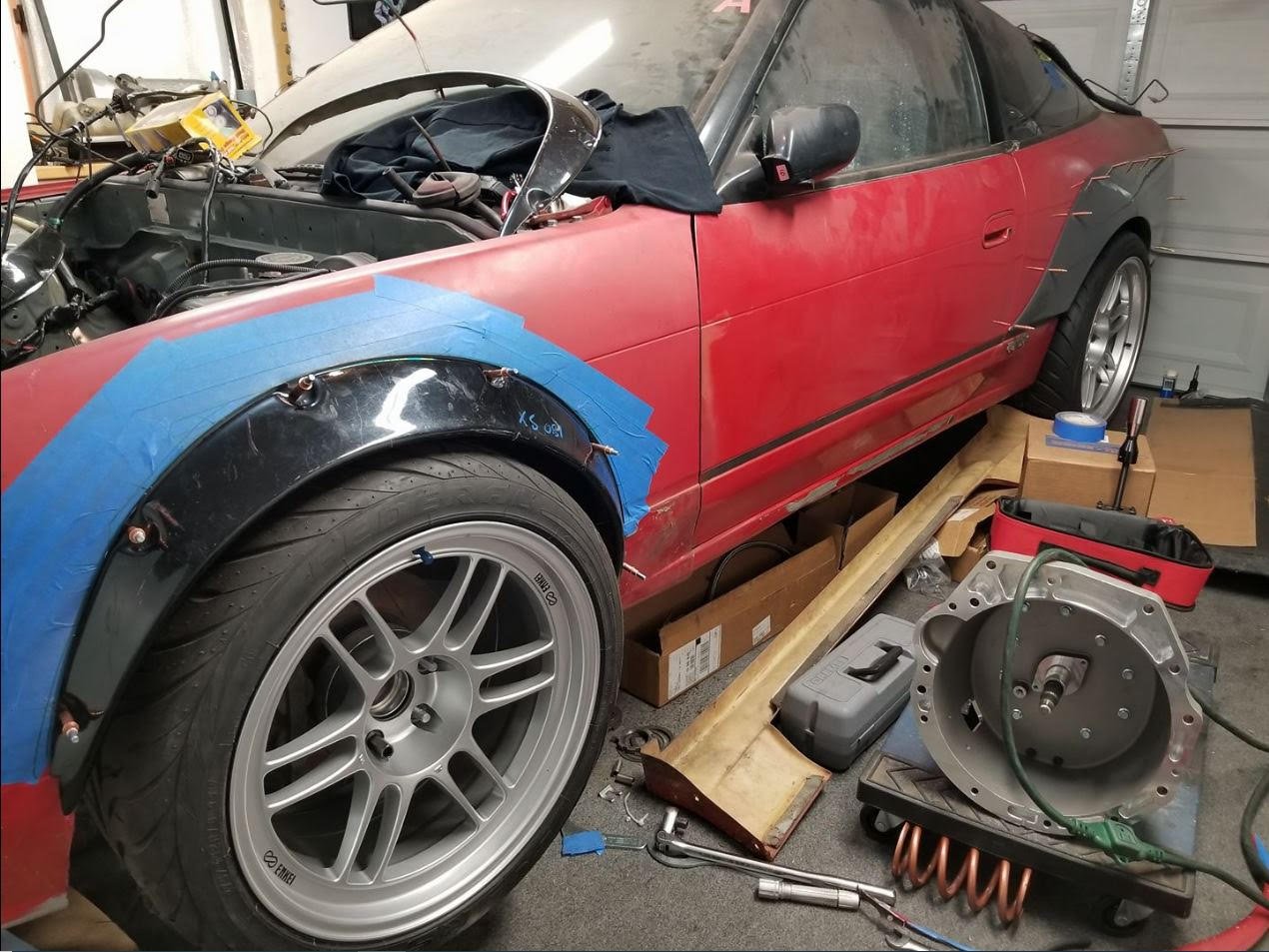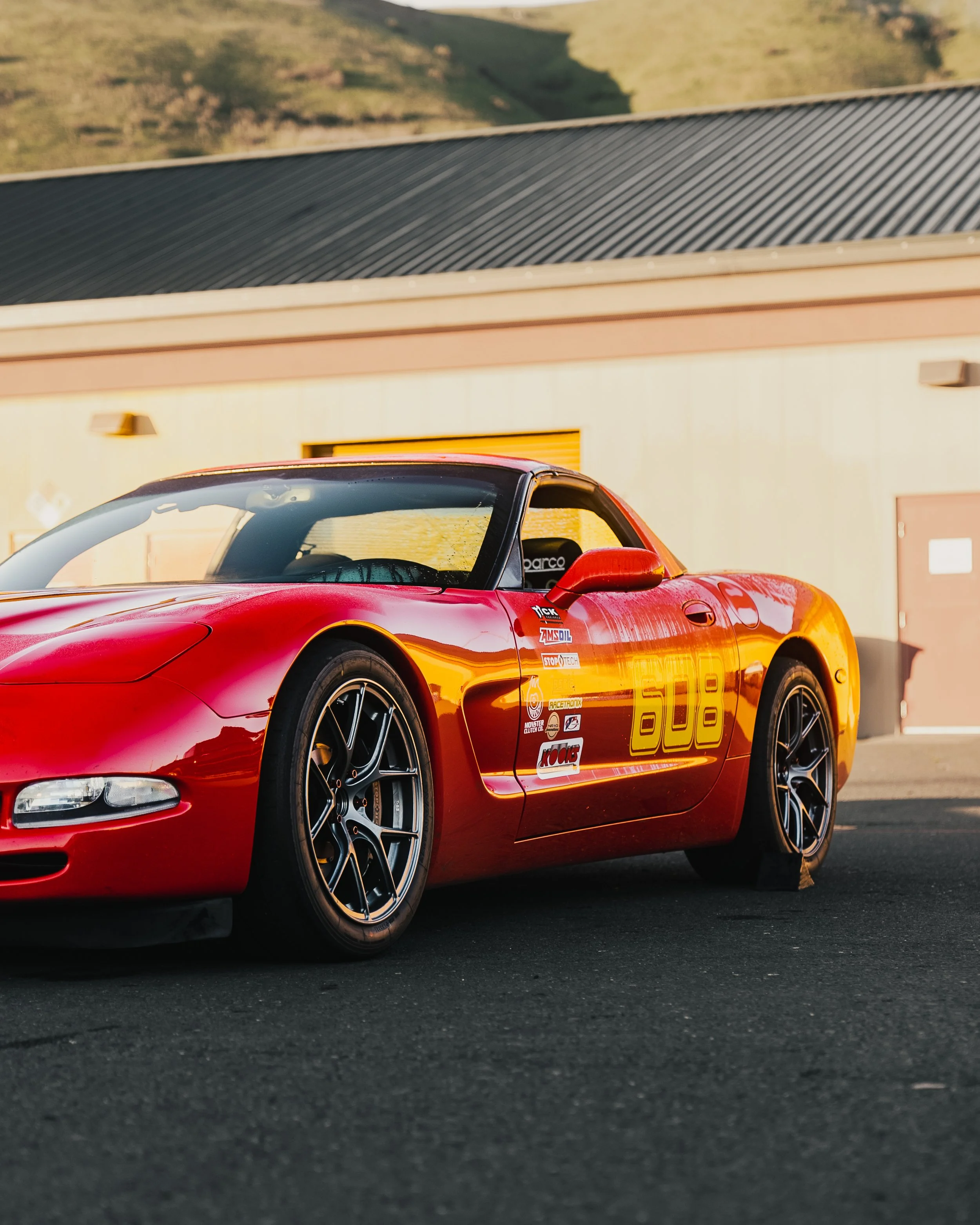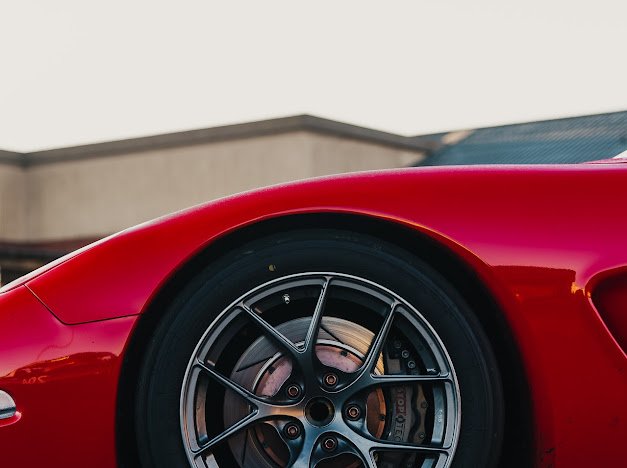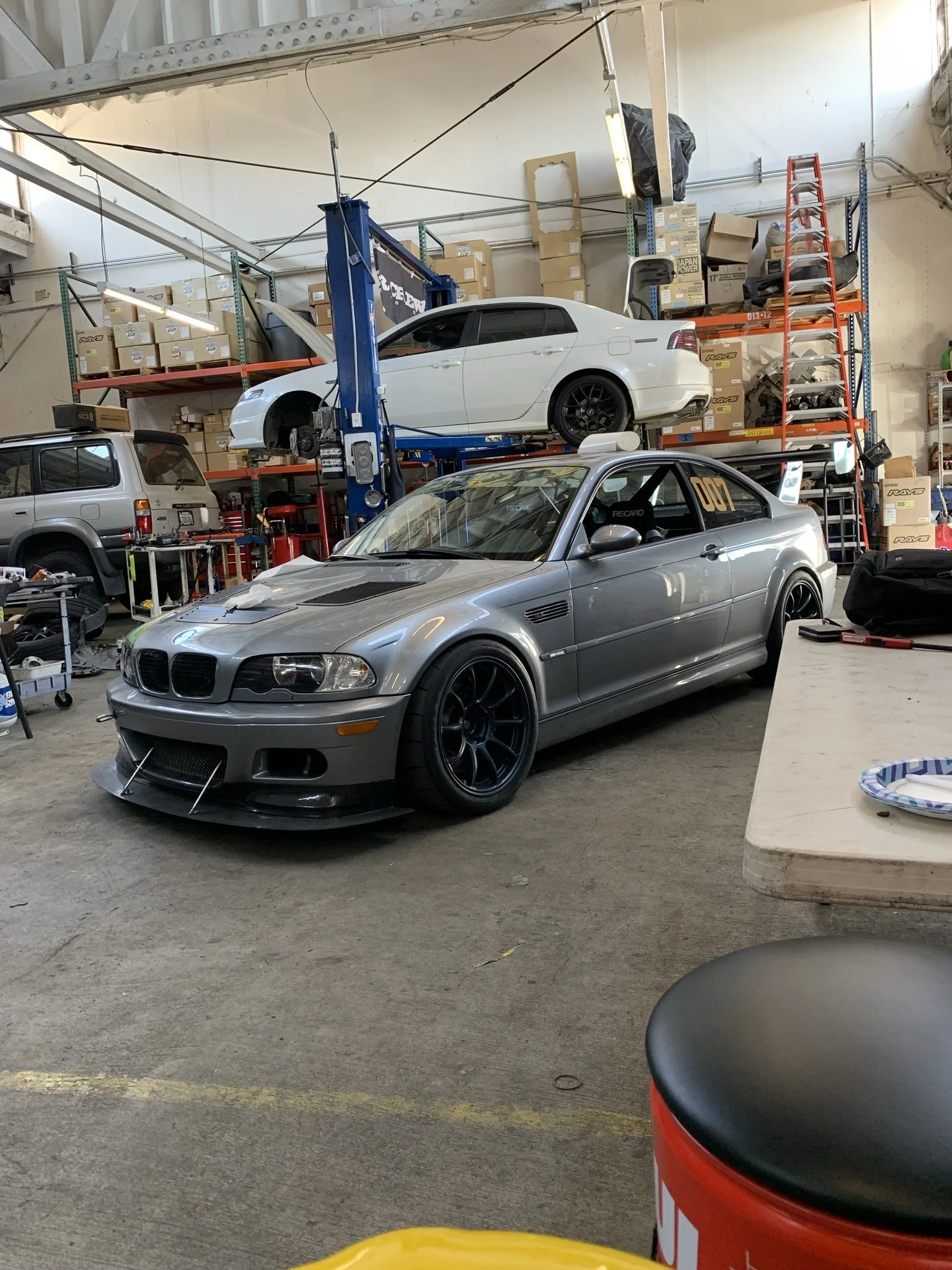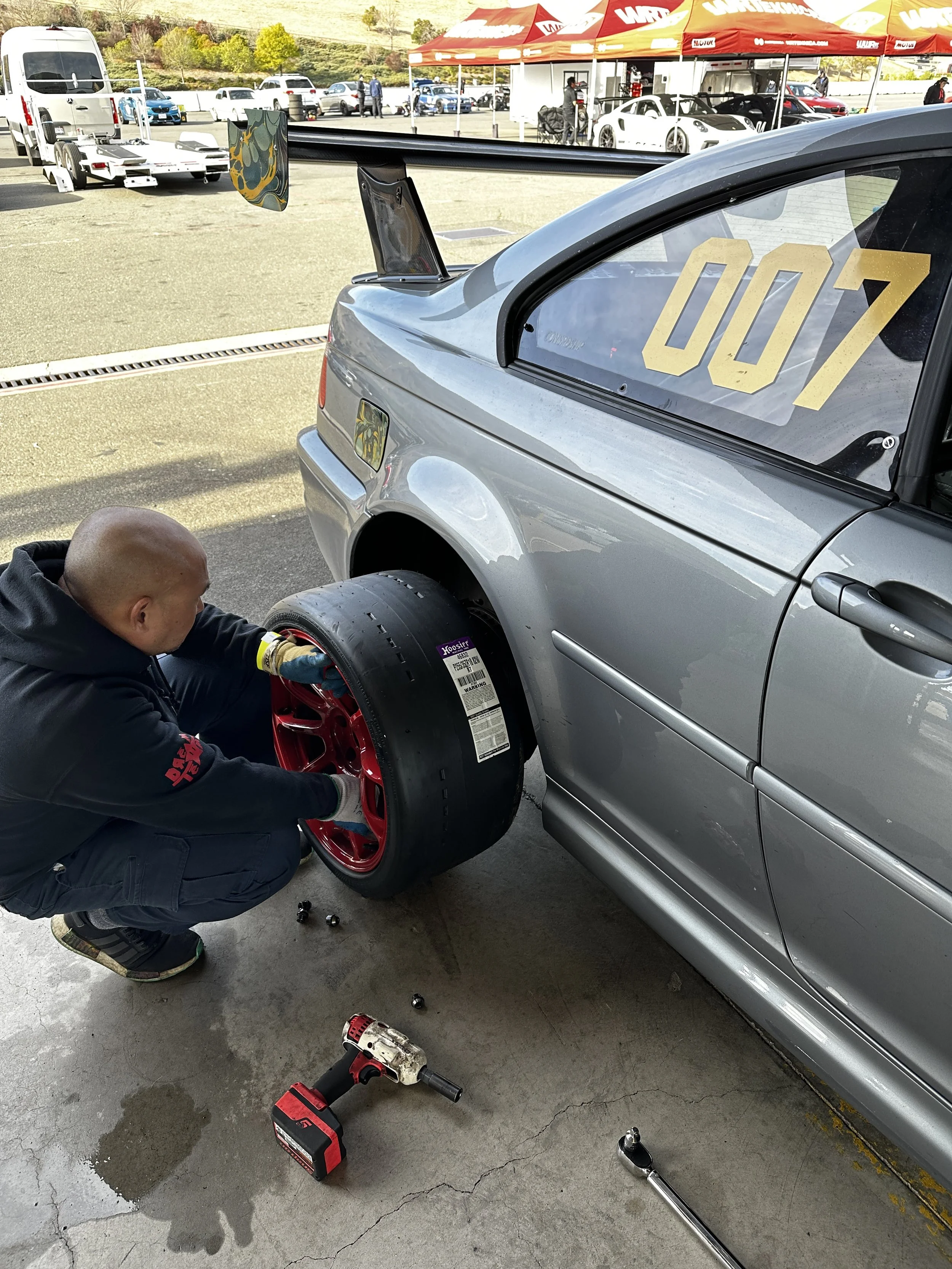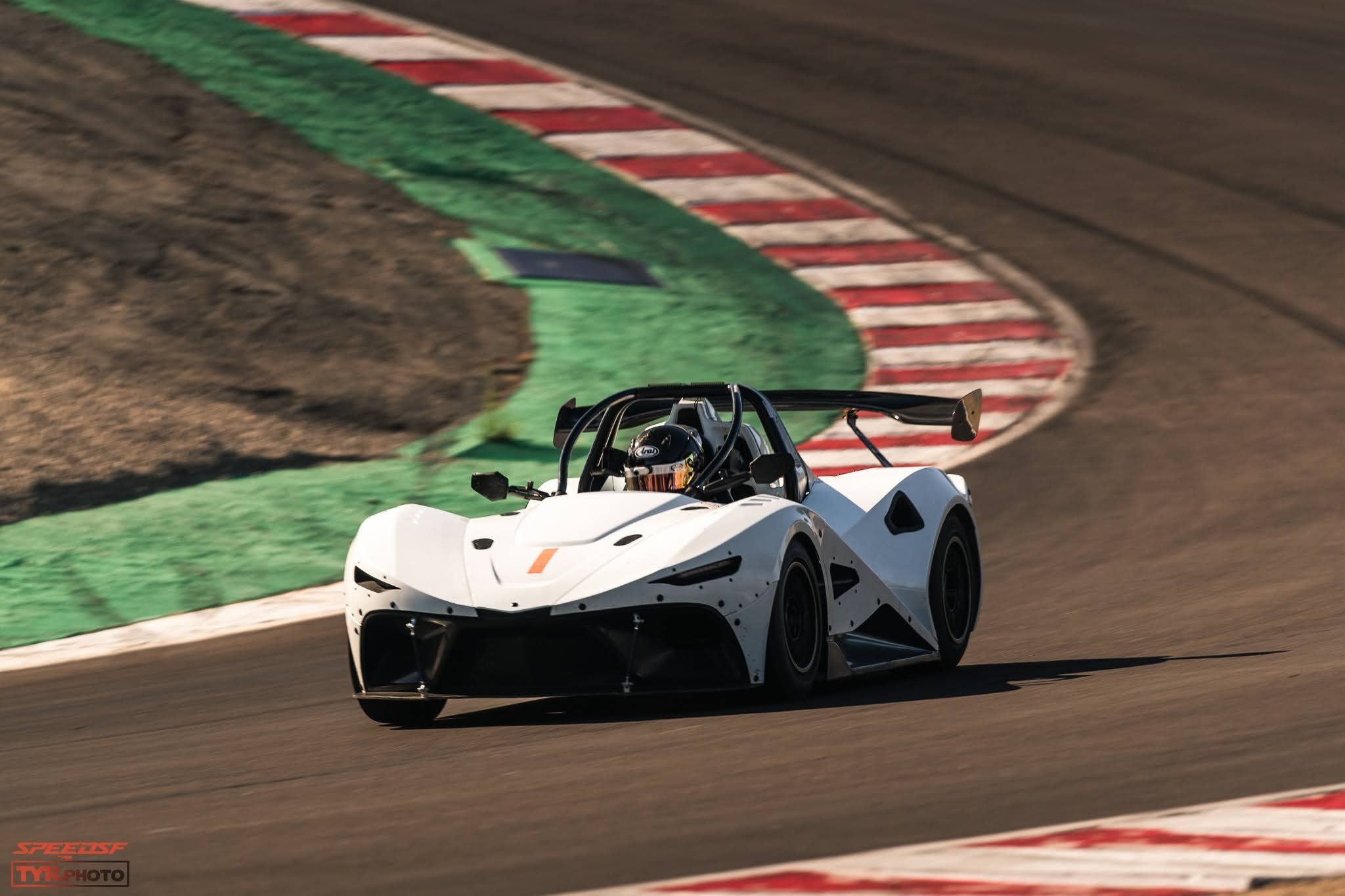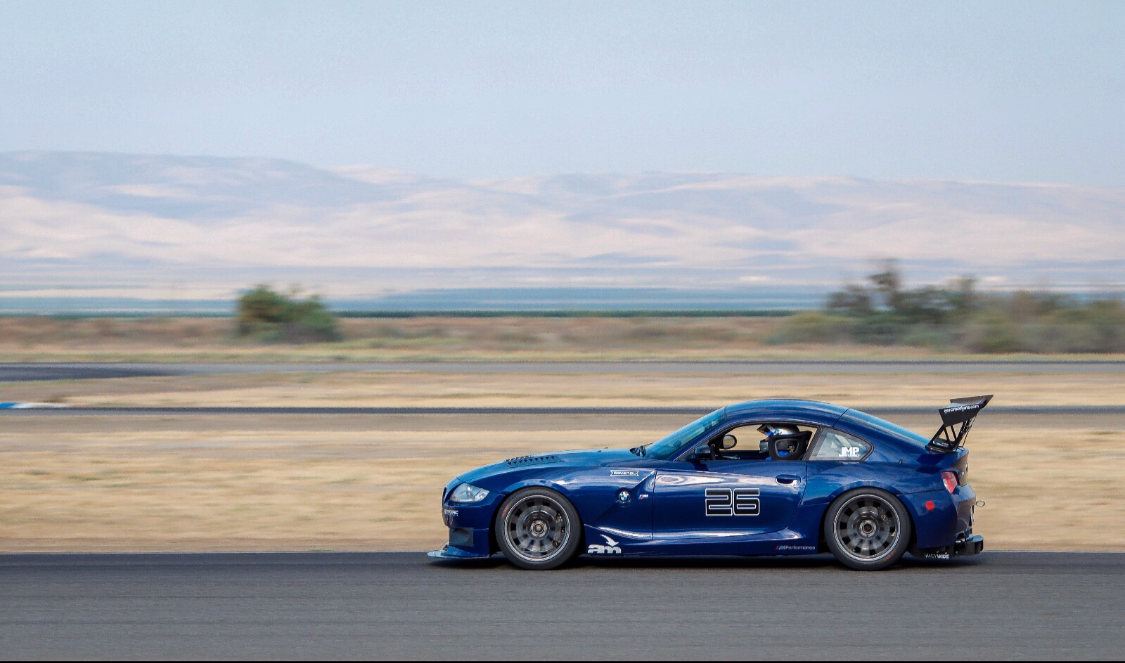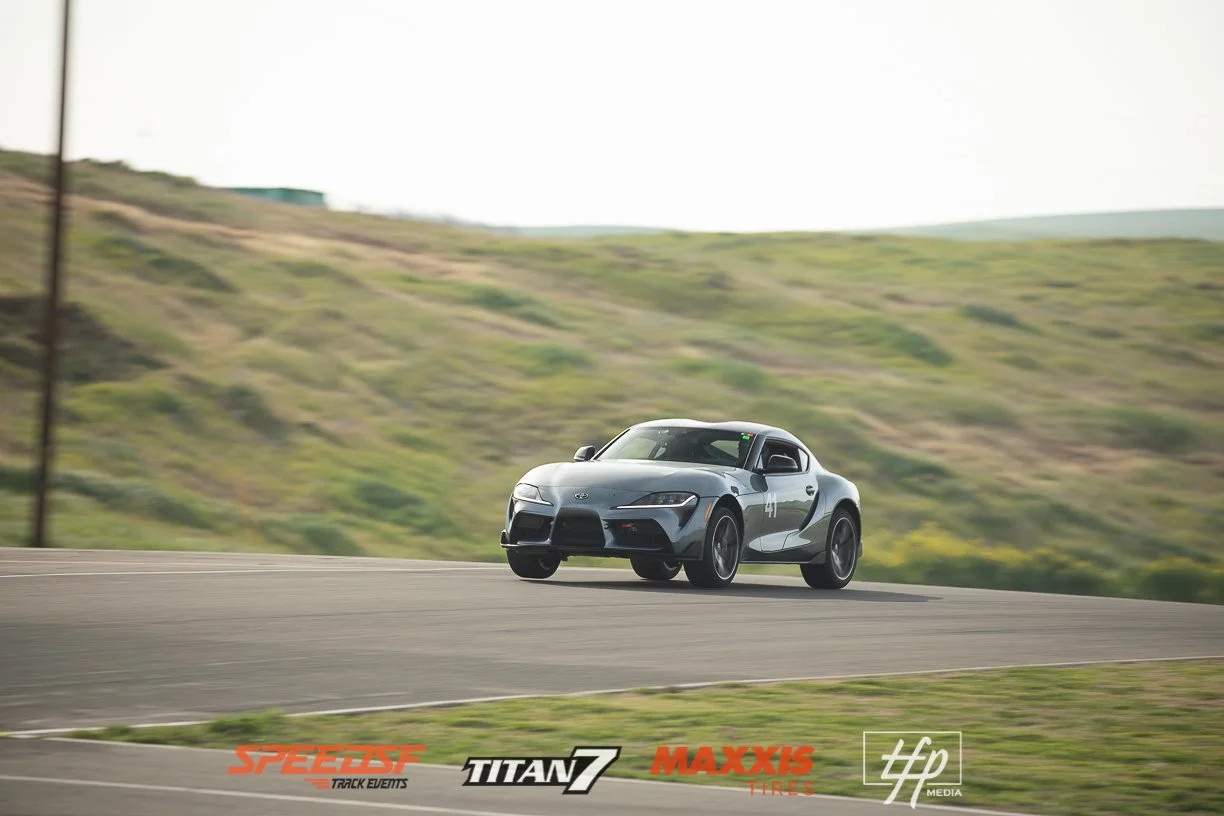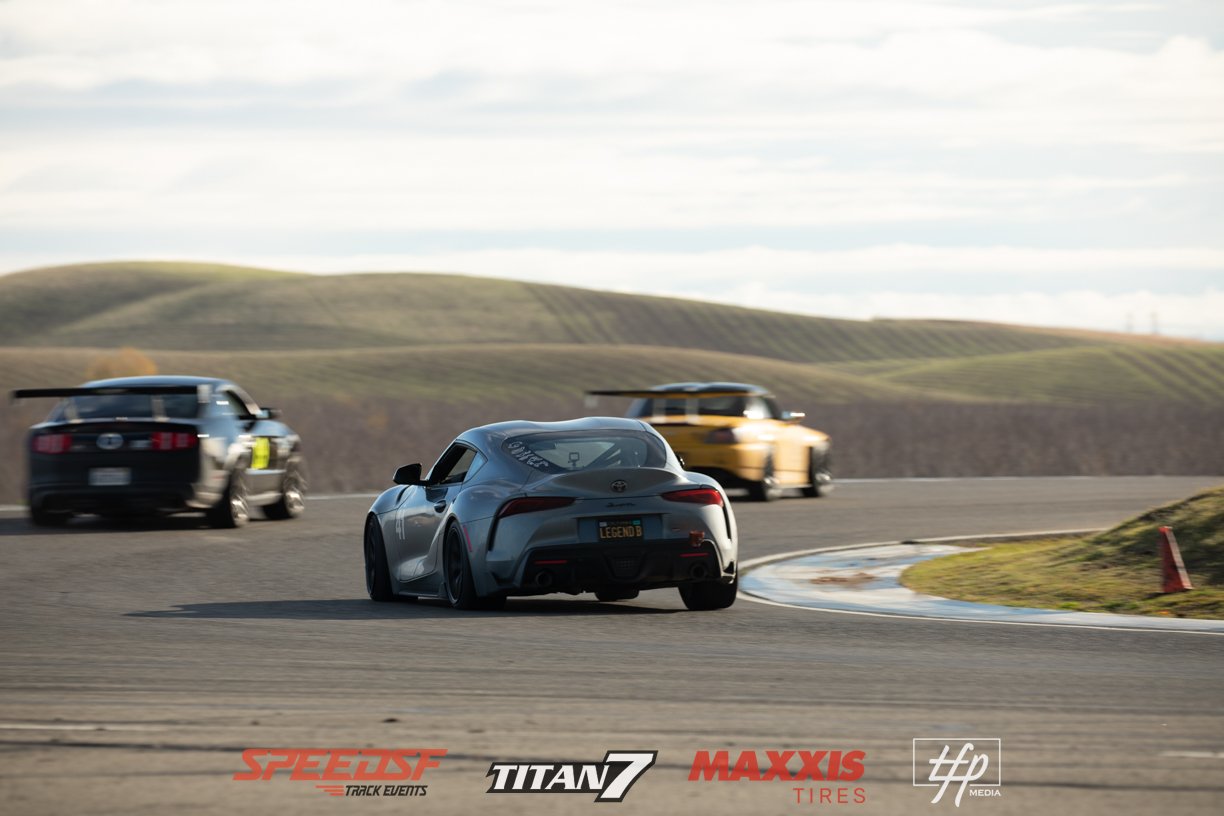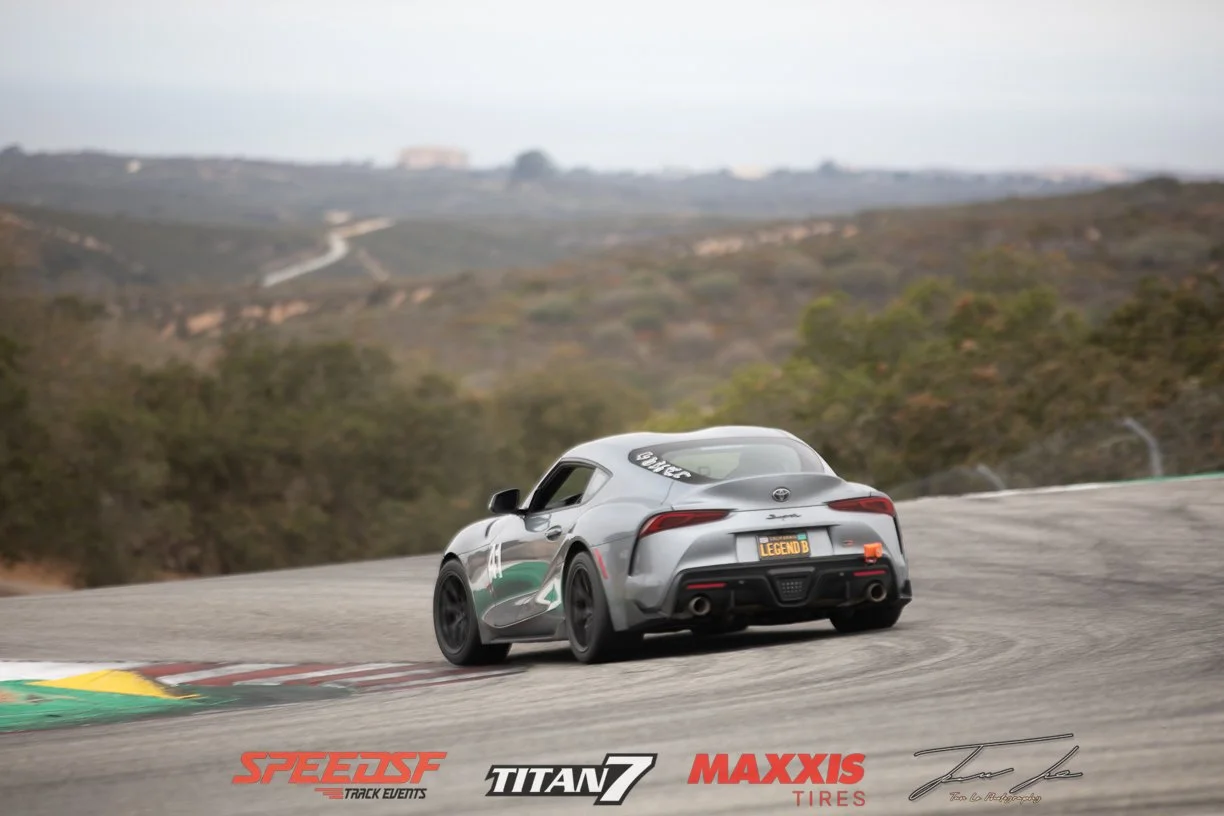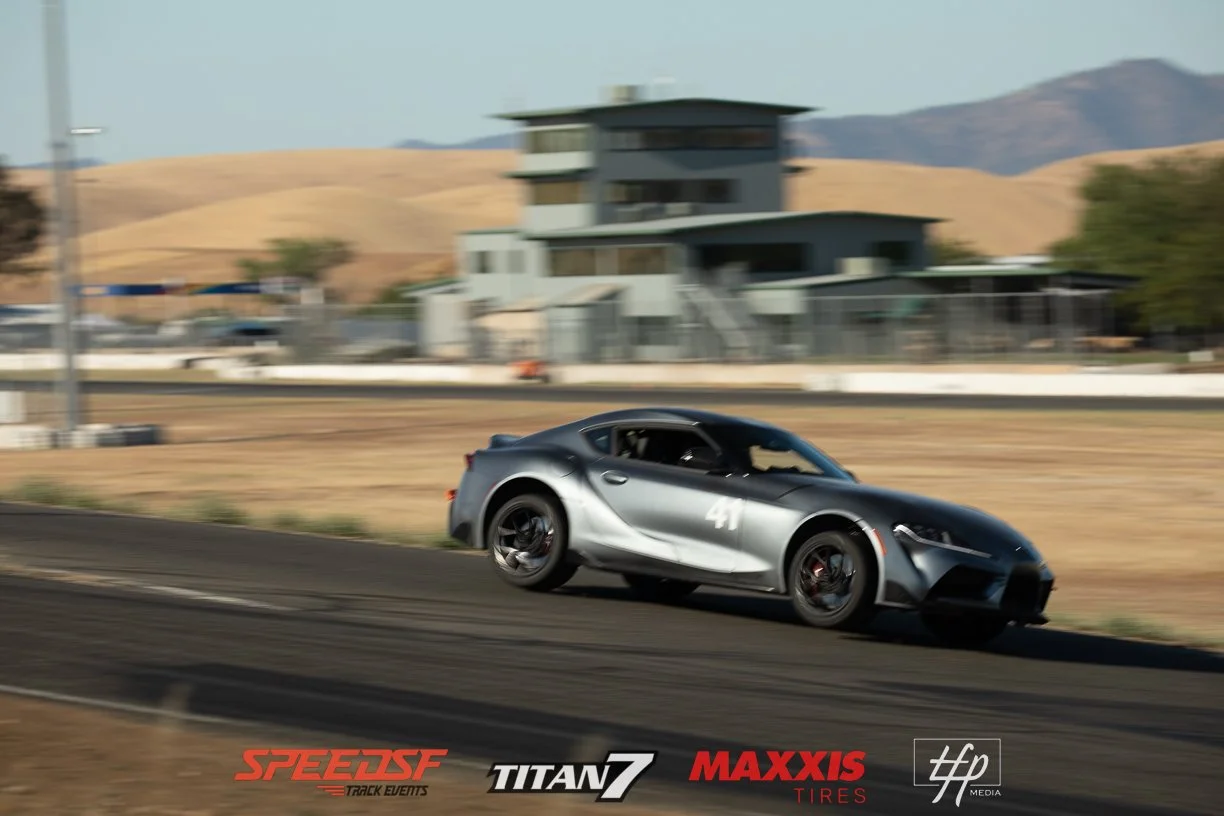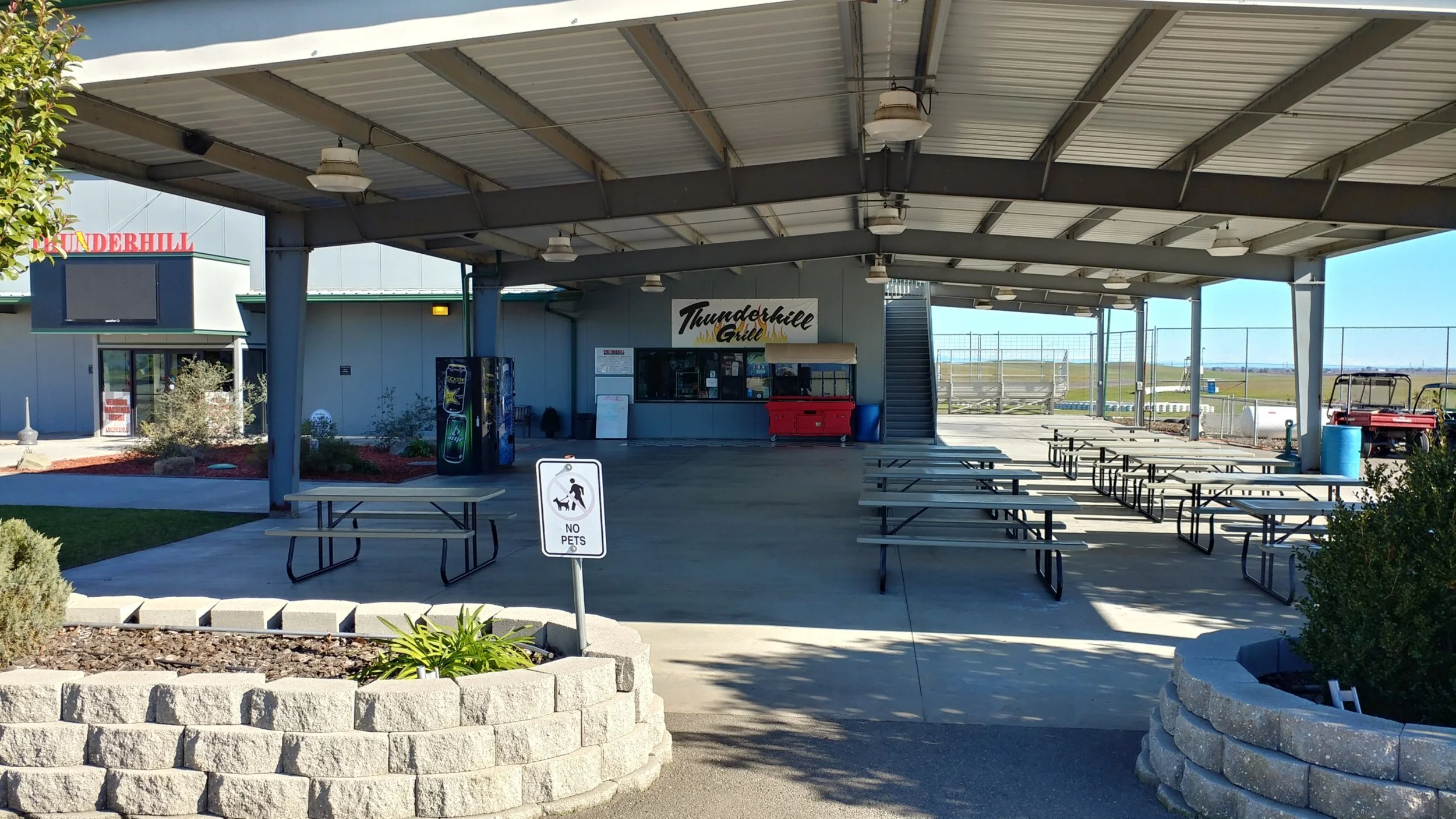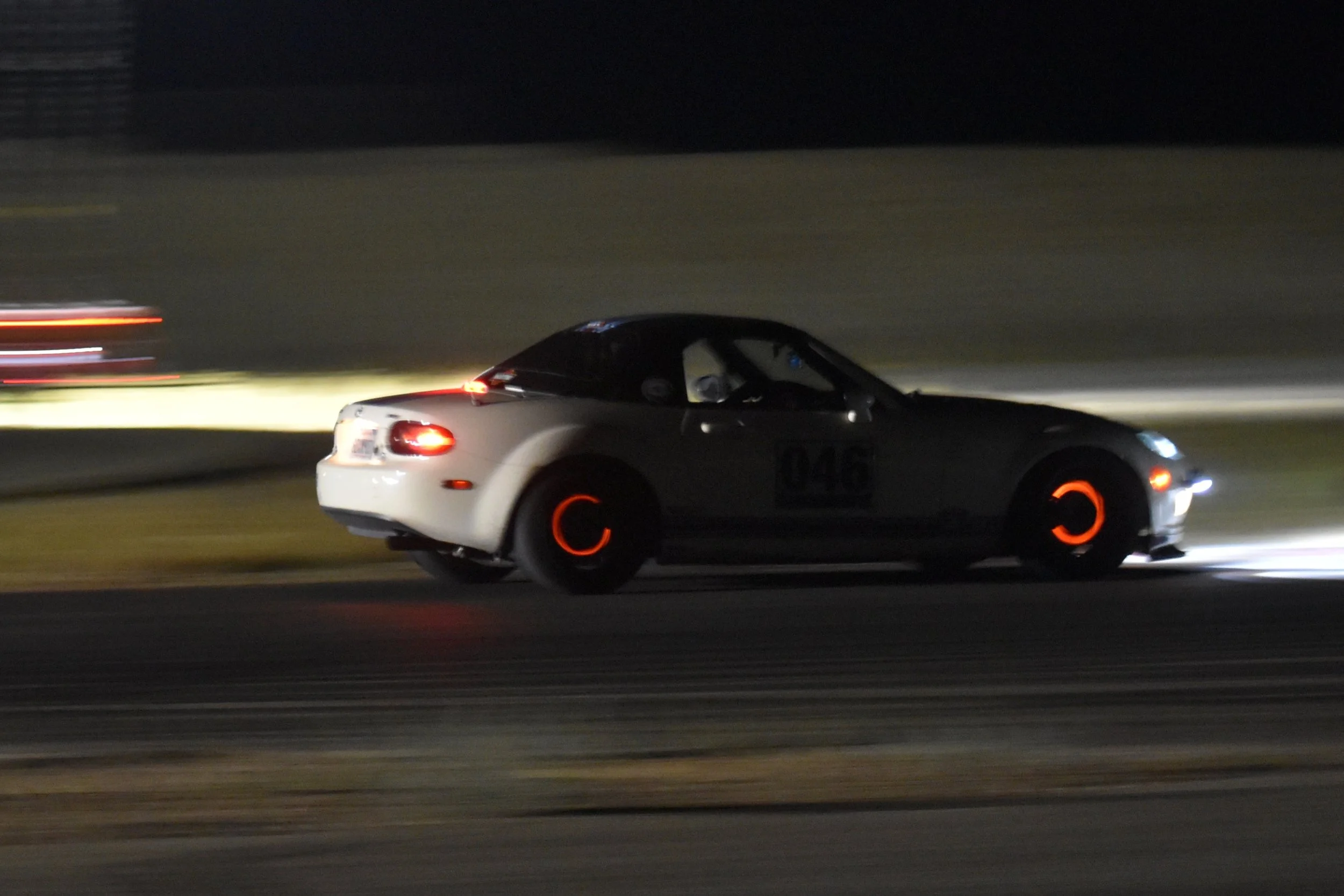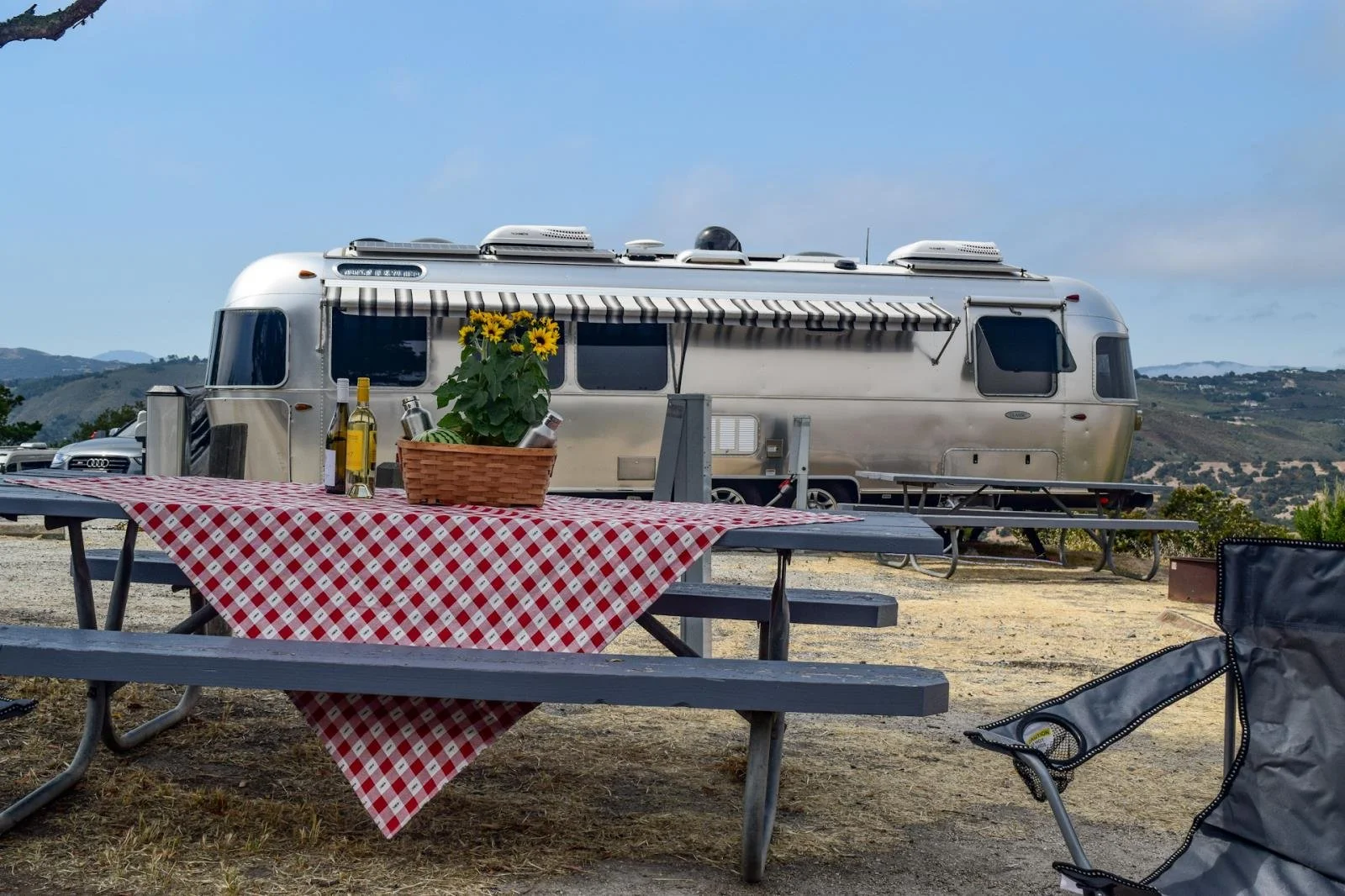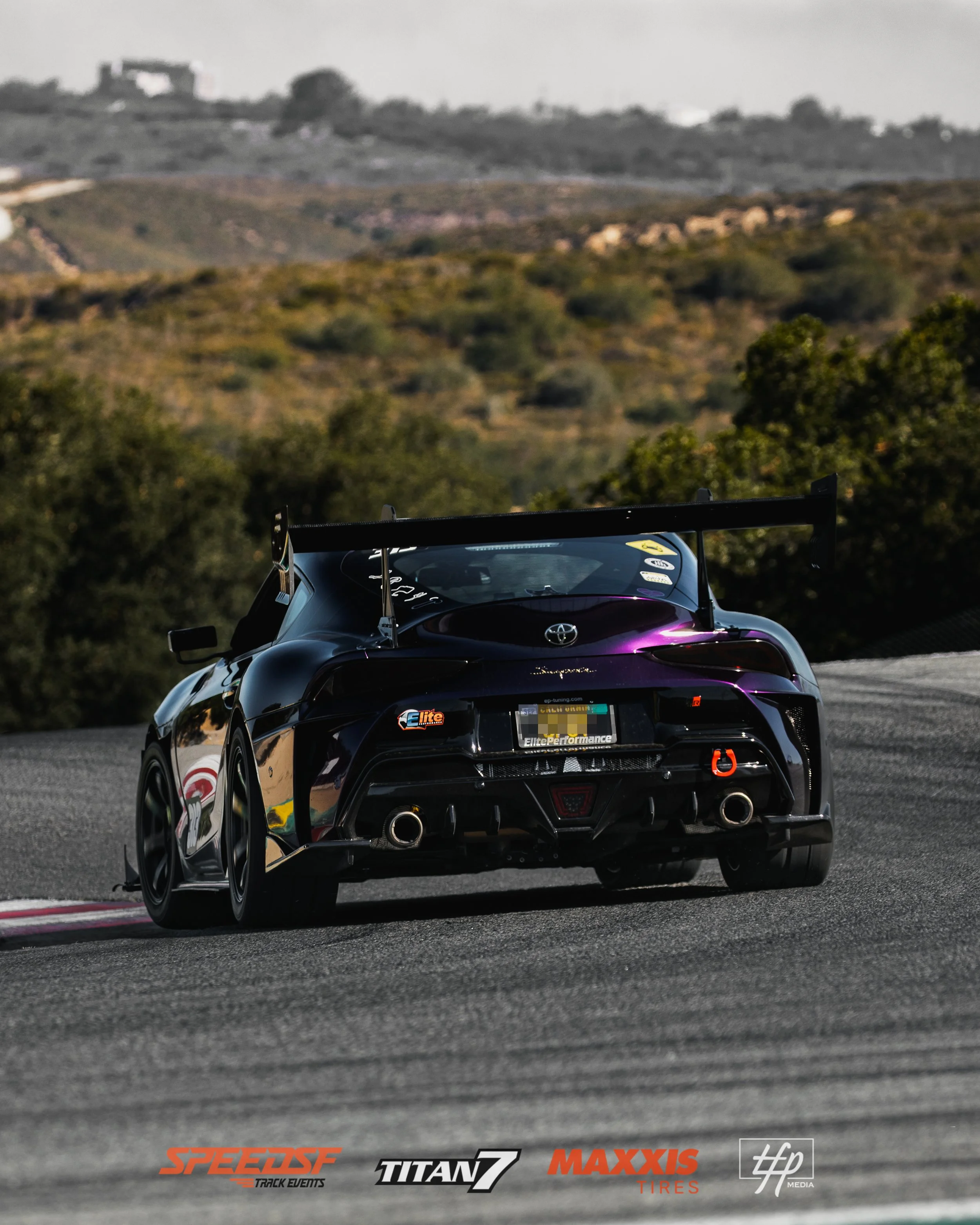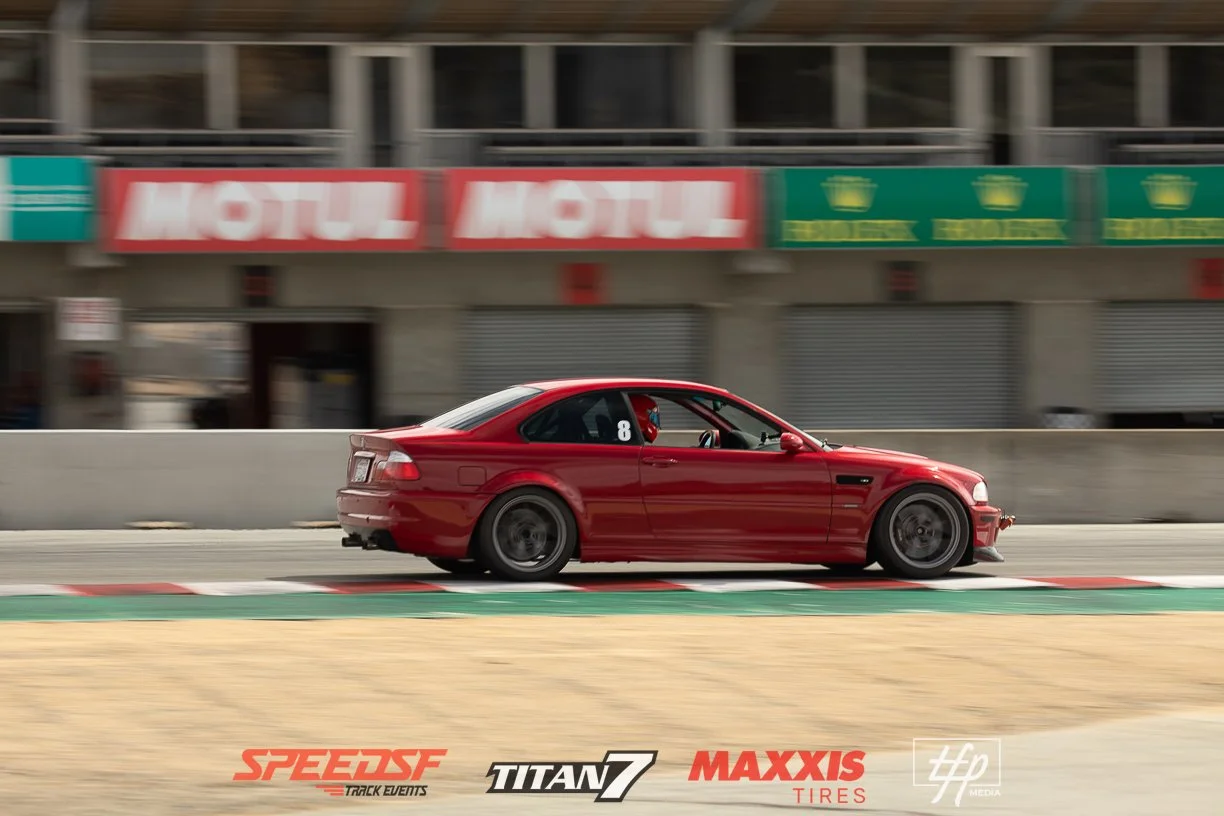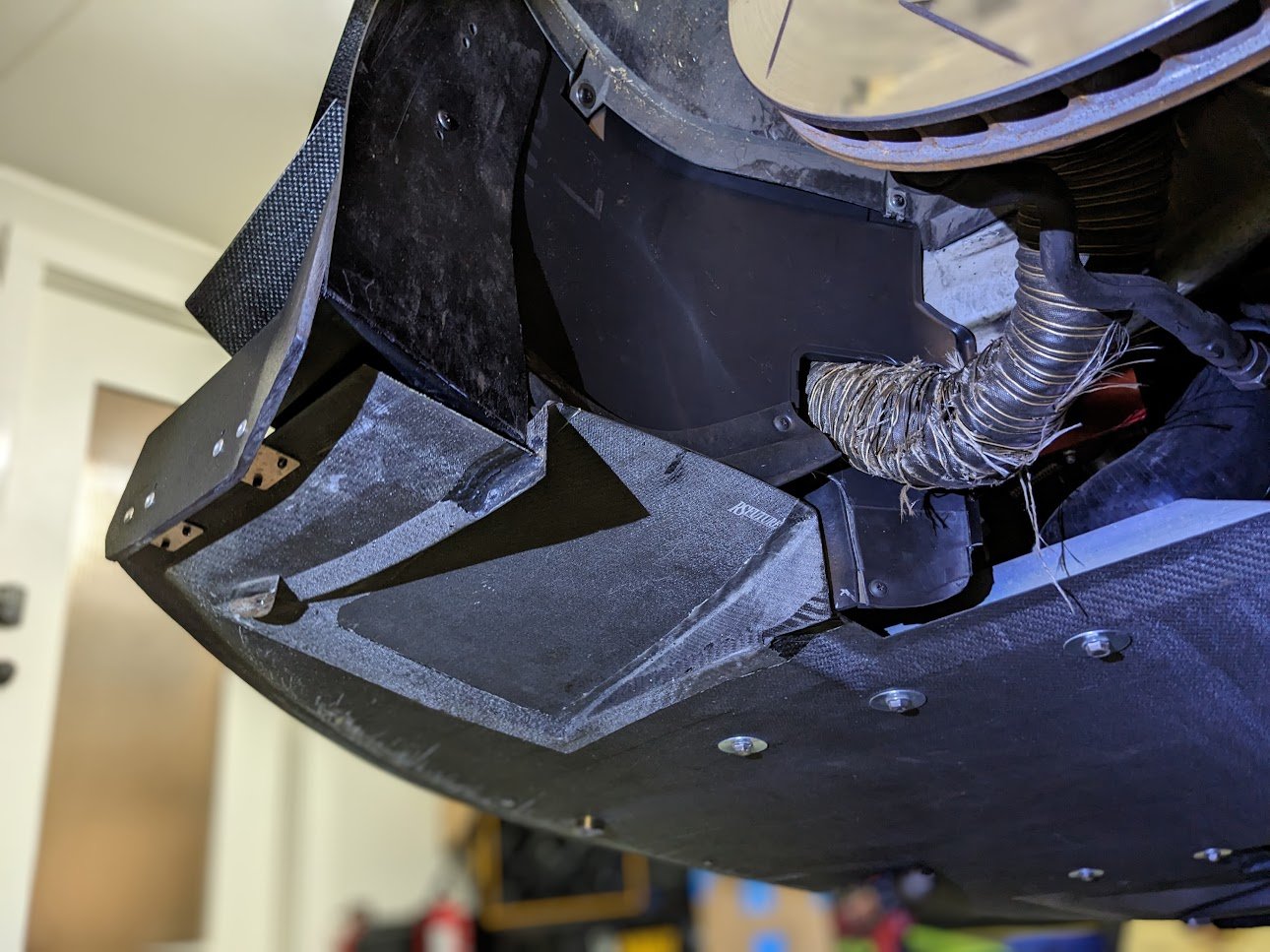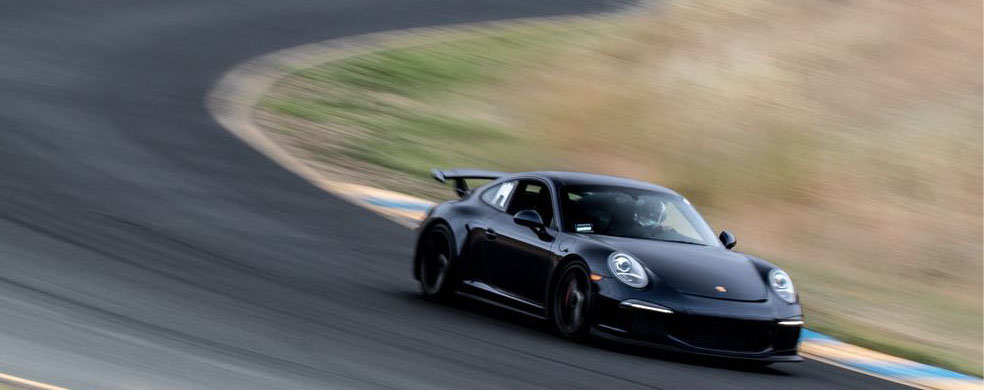
Richard’s MR2 Turbo: Not Too Pretty To Pirouette
Although Richard already had an E92 M3, he decided to spruce up his mid-ship sports car and spin his way into driving competence.
It began all the way back in grade school with Gran Turismo. A few years later, Richard Tran graduated from video games and started moving through the worlds of hard-parking BMWs and drag racing until his expanding network brought a few road racers into his life.
When they invited him to a track day with Speed SF in 2019, he accepted — but not before considering the consequences. Richard was opposed to taking big risks; he’d seriously hurt himself in a car crash a few years before, and he certainly didn’t want to damage his then-new M3, but they persisted — they told him he’d leave the the track feeling something extraordinary.
The feelings of euphoria following that first session helped him forget about the potential costs of thrill seeking. In fact, he’d been bitten badly enough to sign up then and there for another twelve track days. Quickly, he put the dependable M3 on the back burner; he had a cheaper, lighter, more maneuverable mid-engined car he believed would take more to master.
To the trained eye, his 1991 Toyota MR2 Turbo (SW20) didn’t look like the ideal track toy candidate. Actually, it looked more like a museum piece. Three-stage paint, fresh interior panels, and completely new suspension components were all parts of a three-year restoration that culminated in a show-grade vehicle. Richard was so proud of it, he displayed it at SEMA.
Work Meisters and the OEM kouki aero was all that was needed to make the SW20 pop — it truly is a svelte, sexy car.
Despite its immaculate condition, he felt it wasn’t too good to be used in the way he’d (ab)used his M3. In fact, Richard felt that he’d be missing out on something vital if he didn’t track it. There was a directness and a demanding quality about it that made him feel giddy at 5/10ths.
The second outing proved he had his head screwed on straight, but didn’t quite have the quick hands needed to manage the MR2. The factory components just wouldn’t cut it, especially on all-seasons, so he replaced the rotors with slotted Stoptechs and slapped on a set of EBC Yellows. Along with those, he installed a set of Tein Super Street coilovers, a pair of GReddy side skirts, and a 1998-spec spoiler with lifted risers for a little flash.
The basic package was fun, but far from friendly. “I made the mistake of trying to drive it like the M3,” he began, “and that just wouldn’t work. I learned pretty quickly that I couldn’t throw it around or brake as late as I could in the BMW.”
The odd agricultural excursion didn’t dampen his enthusiasm for his demanding new car.
After many red flags and several stern conversations with the track workers, Richard learned he had to soften his inputs a little and improve the chassis a lot. The second-generation MR2 is known as a nervous car prone to rotate without much provocation, but it can be tamed with some suspension work, a little maintenance throttle, and the right sort of staggered tire setup.
Giving precedence to the rear axle began by fitting the rear wheels with 245/40R17 Federal RS-RR Pros — somewhat wider than the 215/40R17 fronts. Then, Richard turned to Elite Performance’s Melody Cannizzaro to soften the sensitive midship’s edges. A little more front camber relative to the rear helped settle the rear end while cornering, and more toe-in at the rear kept it planted under braking and acceleration. Then, as advised by his friends, Richard tried stiffening the front to minimize the nose dive under heavy braking, which could encourage the lightened rear to spin.
Minimizing some of that see-sawing gave him much more confidence in the car, and the resulting improvements in cornering speeds helped Richard notice a few more of its shortcomings.
It wasn’t the tight, direct thing he thought a lightweight MR car would be, but, after all, it was nearing a half-million miles. Sunshine Auto overhauled the entire suspension, adding new control arms, bigger sway bars, inner and outer tie rods, additional chassis bracing, and a set of 808 Racespec coilovers from Bob Pham. “The new setup made the car feel like a go-kart. Actually, the first day back at the track with these mods, I went six seconds faster than I’d ever gone before,” he exclaimed.
Richard’s love for the Sailor Moon series gave this car its eponymous nickname.
“Those modifications transformed it from a decent daily driver to an uncomfortable track car, but I still trust it enough to drive it to the track — it hasn’t left me stranded once,” he said. Pretty impressive for a car that just passed the 500,000 miles on the odometer. Chalk a bit of that up to build quality from the late-eighties Japanese boom, some of that to Richard’s obsessive maintenance habits, and a little bit to the near-stock configuration of the power train.
Aside from a Mishimoto radiator an HKS SSQV BOV, and a Berk 3” exhaust, the original 3SGTE motor remains stock.
Aside from a splitter and a pair of canards, Richard doesn’t plan on adding much more. Actually, he’s confident enough to admit he’s the limiting factor at this stage. “My friends will get in and go six seconds faster than I can, so I know I need seat time more than anything. Well, I could use a set of Sparco Circuits because I’m getting thrown around on the stock seats, but that’s about it.
For me, it’s the perfect track car — dependable, fun, and constantly challenging. I don’t really care about making it the fastest car here. I’ve got a ways to go as a driver, anyways. I’m not here to be the best — I just want to have fun, and in that department, the MR2 always delivers.
My track friends’ words of encouragement and support have been a driving force behind my journey; pushing me to overcome obstacles and strive for greatness. I rolled my car once many years ago and I was in the hospital for months. I thought I wouldn’t walk again.
My wife did not want to see me in another accident ever again. Actually, she wanted me to retire, but she saw how happy I was attending track days with friends, so she now watches me track. I promised her I’ll never go completely flat-out ever again and I’m fine with that — as long as I get to see her smile.”
Special thanks to Elite Performance, The Driveway, and Sunshine Auto.
Joe’s AP1 S2000: Continuing Education
A couple years before forty, Joe Drane decided to finally give track days a try. Like with everything he’s pursued, he dove in with two feet and built a stunning S2000 in record time.
It wasn’t until Joe Drane moved out to California at the ripe age of 38 that he was able to try track driving for himself. Being a natural tinkerer and a bit of a hot rodder growing up, track driving had been a lifelong dream, but the opportunities for that sort of thing in rural Florida were few and far between.
After teaching him the ins and outs of network engineering, Joe started learning the cloud and found a few roles with startups in Texas. This created a focus on execution and continuous learning while also placing high value in data helped him put together a stellar resume in short time. This almost obsessive approach would later help Joe learn at a ridiculously rapid rate when learning the racing ropes.
The Land of Milk and Honey
After relocating to San Francisco to start a new role with Facebook, the assortment of beautiful sports cars lining the streets suggested he might be in the right place to learn to drive on track. He searched for ins on the pages of the local sanctioning bodies until he found an easier, more cost-effective way to dip his toe in the water.
Meanwhile, the need for a new outlet was getting harder to ignore. COVID weighed heavily on him, and while he loved his new job, it didn’t offer the distraction he needed mid-pandemic.
When he proposed running a few lapping days one weekend, his wife not only supported him in his decision, she helped him find an appropriate track car. Incidentally, the two had met at work after Joe spotted her leaving her S2000 in the parking lot. It only seemed right that such a car, the conversation starter, would help him start another love affair.
And so he picked out the cheapest first-gen S2000 he could find. This was several years ago, but even by the standards of the time, this car was affordable — and for good reason. “It was just a mess. It had no rear glass, the check engine light was on, the wiring was a rat’s nest, and the motor was ticking. I spent the winter restoring it, but I didn’t realize just how bad things were until I started working on it.”
Growing Pains
“I ran into some issues installing the aftermarket parts. The radiator wasn’t sitting low enough for the hood to close. I took it into the shop at BlackTrax to have it inspected, and there the mess continued to unfold. The radiator supports were bent, and I couldn’t purchase new ones anymore. I had to source the brackets from two fender cutouts from eBay.
Then we pulled the cylinder head and saw the valve retainers were cracked, there was a ton of carbon on the valves, and two of the cylinder walls were scarred. After ten track days, the transmission blew third gear. Oh man, what a nightmare it was.”
To mend the ailing engine and fortify it for track use, he replaced the block with rebuilt F22’s, then fitted a Radium catch can as well as Mishimoto’s radiator and oil cooler. Not eager to deal with another blown F-series, he wisely spent a few thousand more on a Link G4+ ECU to employ several failsafes and extract everything from the motor — mainly more mid-range torque and a peak of 227 horsepower at the wheels.The Link was then paired to an AiM MXG dash which to give him alerts and relay lap data.
Despite the early hurdles he had to cover, he remained willing and able to push on. The obsessive drive which fueled Joe’s career now had a second outlet; allowing him to research the engineering involved, pick parts, test them on track, and build a more supportive social network than the one which work provided him.
As it gave him a new lease on life, he didn’t hesitate to spend whatever was needed to turn this rough example of an S2000 into something exceptional. Within a few months, he’d added a long list of modifications to try and breathe some new life into this aging chassis.
After investing so much in the performance side of things, it made sense to apply an Inozetek wrap to help the car pop.
Among those additions were an APR splitter, a Voltex Type II wing, Rockstar Garage’s Feal two-way coilovers, and Stoptech C43 (F) and C42 big (R) brakes. Studying hours of onboard footage — namely Nate Hackman’s banzai laps — helped him understand just how much harder he could apply the brakes and how severely late he was getting to throttle.
In the interest of getting up to speed quickly, he skipped the cheap tires and went straight to a set of Yokohama Advan A052s, then wrapped them around a set of 18 x 9.5” Advan Gram Lights.
Though he’d already spent a small fortune on parts, never once did Joe agonize over expense during this introductory period. “I decided to pay for an education in racing since I feel it usually pays dividends,” he said. When his engine tuner Jei from BlackTrax offered to tag along to one HPDE at Thunderhill and teach Joe to study data, he jumped at the opportunity. “The telemetry revealed I was shifting a little too much, so we figured out the right shift points and instantly cut a couple seconds off my PB.”
The car was capable and reassuring enough for Joe to continue pushing, but asking more the car led to the standard Torsen differential failing. In its place, Joe put a Puddymod 1.5-way OSG and found the incremental improvement in power-down and stability motivating enough to invest in one other area that wasn’t quite up to snuff: dampers.
Joe knew the top-shelf option would make the car more quicker, more predictable, and less taxing to drive, so he splurged on a set of Blacktrax-built Penske 8300s. Even without much knob turning, the new dampers revitalized the car and helped Joe find the confidence to commit to the quick corners. “My favorite mod, without question. I dropped six seconds off my previous best the first time out on the Penskes. Worth every penny.”
Continuing Education
Learning to wrench and approach the track from a theoretical perspective helped him progress, but never having attended a racing school, he started to wonder if there were ways to improve his technique post-haste. He enrolled in a few drift courses to study the art of oversteering, and soon felt at ease asking the S2000 to rotate a little more than before.
Both his approach and the S2000’s setup are far from perfect, and Joe’s wise enough to admit that. “I haven’t thought much about adjusting the dampers — most of the time I just leave them in a neutral position and try to drive as best as I can.”
But the results from a relatively short time spent on track speak for themselves. He’s learned at a remarkable rate and, with a little more guidance from the knowledgeable group of friends he’s made recently, he’s bound to be fighting for podiums at the front of the S3 class sometime soon. He still has a few points to play with — and they’ll go towards a Zebulon rear wing, a larger Alumalite splitter, and Professional Awesome tunnels.
Joe’s studious nature has also helped him better understand the endless tradeoffs that building a track car requires. While the major cost associated with getting a rough car off the ground can eat into an aspiring driver’s budget, the peace of mind that comes from driving a flawed, imperfect car can help a driver push hard — harder than they likely would in a pristine example. That’s why he has no regrets taking the rocky but fruitful and informative path he took.
Michael’s 350Z: Take A Chance, Prove a Point
Looking for an affordable drift car, Michael “Stubz” Stillo grabbed a 350Z and started driving sideways. After some time, he recognized the car had potential as a track car -- as long as he could accept a few shortcomings.
Twelve years with an unloved chassis has given Michael “Stubz” Hillo a unique perspective on taking the underdog route. There are other established, well-paved paths with minimal maintenance and certain outcomes, but they don’t offer a maverick a chance to prove a point.
Stubz took it upon himself to take the unloved 350Z and make it into a NASA ST4 race-winner because, well, he hated the idea of conforming. However, before he started his mission, he was after an affordable way to begin drifting. Nowadays, the 350Z is one of the few Japanese sports coupes that offers the sort of value the budget drifters offered back in drifting’s heyday. Even then, it was pretty cheap.
It was more than just an option for the cost-conscious drifter, as Stubz realized. Beyond low overhead, a torquey motor, and a rear-drive layout, the Z has a lot going for it. It’s reasonably stiff, the aerodynamics aren’t terrible, and the aftermarket is decently sized. It might not be as well supported as the E46 M3, but it offers similar power-to-weight figures and the potential to run respectable lap times at a fraction of the price.
The zeal and the commitment to proving the platform came later — at first, it was cheap fun. Beating up on pricier cars was only part of the pleasure; the steering was full of feel and responsive, the motor responded well to modifications, and the rear end put the power down decently.
Some of that luster began to fade when he tried to turn the Z into something more than a midfield car. The budget modifications no longer seemed to be enough, and so he tried experimenting with the high-end brands which only offered limited support for the Z.
After testing Penske and Godspeed coilovers, he settled on MCS two-ways with 18K springs up front and 9K in the rear. The car still lacks some of the compliance he’d like in slower corners, but it works well enough in the fast sections, thanks in part to Epsilon+ aero, that the compromise is acceptable.
The most irritation has stemmed from the car’s flawed braking system. Persistent knockback issues and lousy OEM ABS pushed Stubz into spending hundreds of hours diagnosing and attempting to find a package that would work.
Plenty of thrown wrenches and a thousand curse words later, he found a set of Stoptech Trophy big brakes that did a reasonable job. Because they moved the brake calipers closer to three o’clock, they mitigated some of the knockback resulting from the steering knuckle flexing. The remaining bugbear was the ABS system, which needed to be retrofitted with the Bosch Mk60 kit from Race Harness Technologies.
Though the braking system works decently these days, Stubz isn’t completely satisfied. Trailbraking has improved, but the outright braking performance hasn’t gotten much better. However, some of that has to do with the weight of the vehicle, which has been hard to lose with conventional stripping methods. “You’ve gotta get pretty creative when it comes to putting the car on a diet. I didn’t want to, but I had to buy carbon. Hatch, hood, front bumper, and headlight blanks from Spinnaker Composites have helped, but the car is still heavy.” he explains.
It’s transformed into a reasonably swift car in recent years, even with the diminishing returns from spending big bucks on primo parts. The 3,200-pound Z has an average of 257 horsepower which is pretty well administered thanks to 275-section Toyo RRs and the aforementioned aero. A broad powerband helps make the car less track-sensitive than some, and, anyways, Stubz no longer agonizes over finding the perfect setup. After several years of head scratching, he sees the Z as a dependable, safe, and sturdy car which is easy to run and satisfying to drive. Going for the gold isn’t his aim any longer — he’s happy with what the 350Z’s speed. Any car that can lap Buttonwillow W13CW in 1:54 is more than just fun — it’s seriously fast.
Striving to perfect the car sapped some of his ambition, but it’s also given him a few notable wins, wisdom, and a pragmatic approach that provides him with peace of mind. His lack of zeal might not motivate newcomers to try and beat the odds, but if they read between the lines, they should realize that there’s nothing with the Z as an entry/mid-level car. It might not carry an ambitious driver to the top of the podium, but its golden era-pricing lowers the barrier to entry. It’ll help them get involved faster — and in Stubz’s view, that’s better than sitting on the sidelines and dreaming of victory.
Max’s Spec Racer Ford: Lose The Ego
After cutting his teeth in a Porsche, Max got an inkling that going to a lighter, cheaper, more expendable device might expedite his improvement as a driver and budding racer.
After Max Gokhman signed for his 2006 Cayman, his dealer insisted that he take the car to the track. “You won’t be able to fully appreciate it if you don’t,” he said. Max was hesitant — the thought of balling up his brand new Porsche terrified him, but, at the same time, he sensed the man knew what he was talking about.
Max continued to mull over the prospect of tracking his new toy, but his dealer was adamant — so much so he offered to pay Max’s entry fee. That was all Max needed to make a decision. The next weekend, he took the Cayman to Infineon Raceway and began a love affair that never tested his patience. No crashes, no major repairs, and a relatively straightforward relationship with his parts suppliers made his first few years in grassroots motorsports a breeze.
Soft Ascent
After becoming the 2014 PCA Autocross Class Champion and multiple podium-sitter in various Southern California time attack series, he sold the 987 and moved into a 2014 981 Cayman. This time, however, he wasn’t as eager to modify the car. He’d come to understand the practical shortcomings of a track-oriented car and felt he might get more from the ownership experience if he was to leave the car mostly stock.
It was around then that one of his track buddies enticed him into wheel-to-wheel racing. This would entail buying a race-only machine. Truth be told, he had considered it for some time, but the thought of wadding up a Porsche racing car turned his stomach. Even getting on track in one would be prohibitively expensive, so he explored the cheaper options available to him.
He could drive a Spec Miata for a reasonable price, but he wanted something a little different. “I was looking for a mid-engined, purpose-built platform, and — and this is subjective — something a little more interesting than a Miata,” he explained.
He loved the idea of running a “spec” car: something that encouraged close competition through mechanical parity. What about something with the same power of a Miata, but in a car which weighs one thousand pounds less? The tried-and-true Spec Racer Ford, a staple of grassroots motorsport for the last fifty years, caught his eye. Mid-engine, open-top, closed-wheel, and very cost-effective; there was a lot to like about this diminutive, bare-bones racer.
Barest Bones
The tube-frame chassis has a 1.6-liter engine from a Ford Focus sitting transverse behind the driver. These sealed engines produce 135 horsepower, and are fairly inexpensive to replace when they go bang — though this rarely happens. The emphasis here is on reliability, low running costs, and complete driving immersion.
When Max first tested the car at Laguna Seca, he was setting competitive times by the end of the day.
The sense of occasion is something that can’t be underestimated with an open-top car like this. Not only is the visibility fantastic, but getting your helmet buffeted by the wind makes driving at seventy feel like a hundred and twenty. The information relayed by the car is detailed and constant; it’s easy to feel a locked tire or growing understeer through the steering, which is remarkably sharp. “Feedback is crystal clear,” he adds.
Sitting in the middle of the chassis and knowing exactly where your front wheels are at all times inspires confidence to get real intimate with other racers when going three-wide into a turn - truly what wheel-to-wheel is about.
Some might suspect that a car this visceral and direct would come with sharp edges. In reality, it is predictable and communicative, and, as it has much more grip than power, it’s quite easy to find its limits. When it does slide, it’s fairly progressive — more so than the Cayman; nearly 300 horsepower would cause a few dicey situations when passing in a late-apex turn. Some of this is due to a compliant suspension setup, and some of it is due to the Hoosier slick made specifically for the SRF. Incidentally, it isn’t the most expensive tire. Low weight and low power help lengthen its lifespan, too.
The sequential transmission by Sadev, standard in third-gen SRFs, is another racecar element that Max learned to appreciate. Unlike an H-pattern, which is lovely for canyon drives but saps attention from racecraft; or a PDK, which is clinically precise yet fragile on cars that were built for the street; the SRF gearbox lets you bang out shifts while bouncing off the rev-limiter with abandon.
Perspective Shift
Max admits that, while the Spec Racer Ford is the more engaging car to drive, he doesn’t have the same sentimental attachment to it as he had to his Cayman. “I save the sweet feelings for my Porsche. This is a tool to help me grow as a racer. I compare the distinction between the two to owning a pet versus owning livestock.”
And with the reasonable running costs, packed fields, low power, and full calendars, he’s looking to become a competitive amateur racer as he gets up to speed on the Spec Racer Ford platform, with the help of his team Accel Racetek.
“Once I got competitive with this hobby, I learned that money spent on coaching would make me a lot faster than aero, suspension, or other bits of kit. To me, some of those seem most like things to flex over. With Perry and Travis of Accel Racetek, I not only know that the car will be ready for the next race no matter what tomfoolery I get up to on track, but that they’ll keep nudging me to be a better driver.”
Ultimately, the moral here is that with racing, as with any other passion, dropping your ego — such as by going from a venerable Porsche to a humble Spec Racer Ford — may prove to be the path to success, paved with smiles.
Sonoma’s Recent Repave Helps Set New Records
Sonoma’s recent repave — the first in over two decades — has helped Speed SF’s fastest set new records in three of the Challenge groups.
Speed SF’s drivers were fortunate to be the first members of the public to experience Sonoma’s new repave — the first in twenty-three years. One of Northern California’s most popular race tracks, Sonoma has been the site of NASCAR, IndyCar, and World Touring Car races over its fifty-five years.
Construction began after Christmas, with ABSL Construction of California milling out over 10,000 tons of asphalt from the track and pit lane, then grinding down the track, repairing old cracks, and laying the new asphalt.
Crack sealing in January.
Construction completed on February 23rd, two weeks before Speed SF was able to experience the new surface for ourselves.
The scenery was verdant, but the repave was far from green at Speed SF’s first full-track event of the season — enabling some of our front-runners to set new records in three of our Speed SF Challenge groups. Even those who hadn’t set new records set personal records. “The track is about three seconds faster than before,” Patrick Chio reported.
S4
In S4, Sean Win-Yepez cut 1.1 seconds off his previous best.
“There is more grip everywhere, but the gains are especially noticeable in T3/3A. There, there was so much grip that my power steering started to cut out!
One observation is that the curbs are not redone, so they now offer relatively less grip than the track itself, whereas before they were essentially about the same as the pavement. So, drivers who didn't use the curbs before will pick up more time than drivers who used them a lot.
My setup has remained pretty similar to last year, and I don’t think I benefited as much in the traction zones as some of the more powerful cars,” he added.
S3
In S3, power helped spread the distance from the previous bests a bit further. Spencer Kimball chopped the previous S3 record, set by him last May, by 2.59 seconds. In the last fifteen months, nothing about his setup has changed aside from some weight reduction. "The new paving really helps with consistency and driver confidence. Thanks to the smoother surface and lack of cracks, you can now take T1 and T2 on proper line instead of diverting your path to avoid surface undulations. I have yet to analyze my data and compare it to my previous run’s, but my lap times were about two seconds faster than my last event at Sonoma in 2023.
Based on my quick and dirty analysis, time was gained in T1, the exit of T6, and the T8/8A esses. One of the coolest features of this totally fresh paving is that my tires looked brand new after the event. Once it's rubbered in, I think we'll be seeing a lot more sub-40 cars at Sonoma,” Spencer predicted.
S2
In S2, Maxwell Lisovsky was able just to show what his monster E36 is capable of. It has benefited from the most development as of late, but that doesn’t take anything away from his staggering 1:39.3 — a whopping 3.5 seconds faster than his previous best. Now, applying the power cleanly in second-gear corners is almost an afterthought for a sorted track tool wearing slicks.
It seems that, due to gaining something more in the traction zones, the punchier cars have been able to take better advantage of the new grip available. However, even those in the budget cars and the underpowered scalpels will find something to love about the fantastic new surface at Sonoma Raceway. These times bode well for the future, which promises novel challenges for drivers and opportunities to push harder than they ever have before..
To sign up for Sonoma event on June 21st, click here.
.
Aidan’s GT3: Vision Realized
Driven to realize a very specific dream built on years of tuning high-revving Hondas, Aidan decided that this 991.2 GT3 would have the subtle cosmetic touches to wow crowds and the high-end racing modifications to set seriously impressive lap times.
Photo credit: @z_stills & @tengerphoto
As Aidan Vo moved through adolescence, his affinity for cars carved out a prominent place for him in the San Jose drag racing scene. After he built an all-motor DC2 Integra capable of twelve-second passes, the big magazines came calling. This was the early 2000s, when the tuning scene was enjoying its biggest boom.
Through some of his drag racing acquaintances, Aidan eventually made the leap into road racing. Following his foray at Thunderhill, he started outlining a list of changes the Integra needed to become a corner carver, and for a moment, it looked like Endless might foot the bill.
So Aidan began disassembling the Integra and shelving the parts which wouldn’t do much good around a road course. Halfway through the teardown, he had a change of heart. He parted the car out, sold the chassis to another racer, and decided to hitch himself to the all-wheel drive wagon that’d just reached American soil.
It was in a Subaru WRX STI that really learned how to turn fast laps. His confidence bolstered by the safe, accommodating four-wheel drive, he earned his spurs in relative comfort. Then he switched camps and built a cost-no-object Evo X, which earned several magazine spots. Not only had he become well known and capable around a road course, he’d been rewarded for expressing his inner vision.
As his income grew, he started searching for a new platform. Something with a little more panache — something German.
The big Audi RS4 might not have been at home on the track, but the fit and finish of a plusher, posher machine did spark his imagination. There was something distinctive about it; something which resonated with Aidan and his appreciation for high style. The jump into the Euro market got his imagination running, but, unfortunately, that would be the extent of his involvement with cars for some time.
After living through the height of the tuner craze and enjoying all that the burgeoning market could offer, Aidan stepped away from cars to focus on his career and his growing family. All throughout this quieter interim, he couldn’t successfully quiet one part of his mind. “I missed that buzz; I had to create and build again,” he reflected.
Ten years of car-free focus had done wonders for his finances. Not completely car-free, however; he spent many evenings over that decade drooling over builds his younger self could never afford. When Aidan decided to return to his old hobby, he brought with him the means to realize a plan he’d held for a decade.
“I’ve always been captivated by the Porsche 911 since the 993 generation,” he began. “It’s always had a clean, restrained, understated design — that’s a big part of my aesthetic.”
A few weeks later, he rolled his new 991.2 GT3 into his garage, parked it, and pictured the finished product in his mind with all his planned modifications. The challenge he’d set for himself was considerable, but he had a clear plan and a few connections to help him along.
The Singer DLS was the one machine which inspired the build. “I’m not a Porsche purist who doesn’t believe in tinkering on their car. I see a Porsche as a vehicle that I can use to promote my vision.”
Knowing that the name Manthey was synonymous with Porsche performance, he did what all GT3 owners with grand aspirations for their build would do: purchase Manthey’s complete suspension, brake, and aero package.
There are only a few GT3s equipped with these parts in the Bay Area, and for good reason — one kit costs as much as a newish economy car. Most struggle to justify spending nearly thirty grand on Manthey-tuned KW dampers, solid bushings, brake lines, pads, dry carbon wing, as well as a Cup car’s front splitter, but the resulting crispness and composure is worth it to those with discerning taste and deep pockets.
Perhaps the one downside was that, for all that money spent, the car didn’t look much different than it did prior to the modifications. With so many Porsches looking so similar, Aidan decided to give a nod to the Porsche styling of yore by replacing the factory GT3 wing with a Porsche Sport Design ducktail. He learned shortly after just how difficult it would be to swap out this piece, retain all functionality, all while using OEM Porsche parts — and only OEM Porsche parts.
A hundred calls to local dealerships resulted in the same sad message: “on indefinite backorder.” It took months of perusing before he found an appropriate ducktail from a local owner looking to return his Sports Design-equipped car to stock, but he finally found the part. With the ducktail in hand, he felt as if the build were gaining a momentum of all its own. “Finding that part gave me the confidence to continue doing things the way I want to do them. Everything happened so organically, it almost felt like destiny.”
It’s subtle, but it sets it apart from the rest of the winged GT3s driving around San Francisco.
Of course, the body and the engine underneath would require several tweaks to accept the new boot-lid. Aidan had to source a 911R intake, 911R engine cover, the hinges, every nut and bolts and the oil return lines to allow this new body panel fit snugly. Unfortunately, What would seem to be a simple swap took months and countless emails.
The tradeoff was obvious. “The ducktail definitely makes less downforce than the original wing, which I learned when trying to go flat over Turn 1 at Laguna Seca, but it helps with rear visibility.”
With used 911-money spent on the suspension, it would only make sense to do the same with the powertrain. With Dundon Performance on the phone, Aidan specced out an engine package that would uncork the power of the 991.2 GT3, more mid-range torque and a top-end that reminded him of some of his fastest Hondas.
Dundon provided him with an intake, throttle body, plenum, and headers. JCR provided their titanium race pipes and titanium exhaust tips. The combination of these parts together allows the car to scream like an RSR at redline while keeping a deep, sonorous growl at lower revs.
With the way the GT3 was evolving into something like a racing car, Aidan decided to try and give his car the front track and aerodynamic grip of its race-only sibling, the GT3 Cup. He rung up his contact at Manthey and ordered the primered fenders, flares, splitter, bumper, and crash bar from a bonafide 991.2 Cup car. His painter Jesus matched the new parts perfectly and even achieved OEM paint thickness.
And now Aidan has something that is undeniably his own. Even if it were for sale, his buddies would never attempt to buy it. “‘It’s so obviously his, I wouldn’t ever feel like I owned the car,’ one of my friends told me.”
But is it a show car or a track toy? Aidan doesn’t believe there needs to be any distinction between the two. He’s made steps towards having both distinguished looks and serious performance, and all that he’ll need to do to suit his mood is change a few bolts and reorient the engine fans.
“As pretty as the trunk is, it definitely lacks downforce compared to the Manthey carbon wing. I’ve planned ahead to regain the downforce we all crave at the track. I have a Cup decklid and wing ready for track days. That arduous ducktail swap was done specifically to allow swift decklid swaps when it comes time to take the GT3 back to the track. All you have to do is reorient the fans to fit the subframe brace. After that, you’re off to the track.”
At this point, he feels he’s nearly realized his vision. Aidan cannot see himself selling the car, but that doesn’t mean he’s going to make it a collection piece. Instead, he’ll put it through its paces, enjoy it as both a driving tool and a rolling piece of art, and hope that his commitment and the car’s obvious quality will inspire the next generation of speed freaks with an eye for design.
Passing Etiquette: Making Space and Saving Face
Passing and braking are the last two things a driver learns to do well. We’ve broken down a series of basic rules to follow to help learn how to make the pass stick and how to do so safely.
Photos (unless specified otherwise): Trevor Ryan
Overtaking is a tricky business, and learning how to pass decisively and safely takes time and practice. It pays to err on the side of caution — especially with unknown drivers. After all, squabbling for position isn’t the most judicious thing to do when there’s no prize on the line. Nobody wins a track day.
As a general rule in racing, the overtaker must present themselves alongside the driver in front — typically with the overtaking driver’s front wheels ahead of the overtaken driver’s rears before the turn-in point. This way, they’re able to see the other driver through their peripheral vision. Studying one’s surroundings and knowing where other cars are at all times is necessary to become a capable track driver.
It pays to be seen. Credit: CC-by-2.0/MIDWST.BLUR
Of course, this is a rule followed in wheel-to-wheel racing. With Speed SF, the passing car must have its front wheels in-line with the passed car’s front wheel before the beginning of the braking zone if they want to attempt a pass. It’s worth giving everyone a little more room since nobody can truly win at a track day, after all.
Our aim is to give all our drivers their own space and help the faster drivers safely navigate the slower traffic so nobody gets held up.
To give assertive advanced drivers the leeway to pass freely while allowing novices time and safety to ease their way into it, we have outlined some hard and fast rules for our various run groups. For those groups with stricter passing rules, like Green and Blue, the process of passing is made as simple as possible.
Novice Group (Green)
Responsible novices dedicate most of their mental energy to driving their own car, so they likely lack the bandwidth to watch their mirrors while driving. For this reason, we only allow passing on the designated straightaways — never through the middle of a corner — to simplify the mental burden. The courteous driver being passed should lift off the throttle to make life easier for the passing driver. This really helps when overtaking in a Miata.
When the driver being passed decides to lift off their throttle, they give the passing driver more room to complete this overtake prior to the braking zone, which is our second requirement. The passing driver should not be pressured into squeezing themselves down the inside at the turn-in point. Just because someone, especially a novice, gives the point by does not mean that a pass is possible; the passing driver must carefully judge whether it is going to work. If it’s doubtful the pass can’t work, back off — nobody wins a track day.
Keep an eye out for that point-by. Credit: OpenTrack
Generally speaking, we like the driver being passed to allow the passing driver to rejoin the conventional driving line before turning in. If they insist on turning into the corner from an inside line (ie. a line closer to the apex than the standard line), they must navigate a shorter radius and therefore reduce their entry speeds accordingly.
Because the novice’s situational awareness isn’t as great as a regular who instinctively checks their mirrors, we require the passing driver to wait for a specific gesture from the driver ahead. By leaning their left hand out the window (or right in a RHD car) and pointing at the portion of the track they’d prefer the overtaking driver to use while passing, they give a sign of recognition and avoid confusion. Wait for a clear signal, and preferably before a longish straightaway — it’s safest and easiest to pass there.
Intermediate Group (Blue)
Even with their experience, we want members of blue group to follow the same passing rules as the members of green.
HARD RULES: GREEN/BLUE
Point-by passing is required at all times. Under no circumstances is passing in the corners allowed, and passes along the straights must be completed before the braking zone.
Point-by Recommended/Mixed Group (Yellow):
After a dozen days or so, driving alongside others at a quick pace is no longer terrifying like it once was. We try to encourage these drivers to be assertive with their car placement so as to begin the two-part process of an advanced pass. Both parties must be aware of one another, and as long as there’s enough room to overtake safely, we allow passing without a hand signal. Though a point-by is still recommended to make sure everyone is aware, it isn’t required.
There are other ways to communicate reaching an arm outside the window. For instance, the driver being passed taps their rear-view mirror prior to the turn-in point (a common acknowledgement). This indicates that the driver attempting the pass is seen and will give way. The driver ahead can also offer a corner without signaling by slowing than necessary before turn-in, usually off the ideal line. If the driver behind sees the “door opening” and the driver ahead taking an odd line slowly into the corner, they will know they’ve been given a chance to pass.
When overtaking and turning in on a tighter line, remember more braking pressure (if braking is necessary) is likely required.
HARD RULES: YELLOW
The fundamental skill required to run in this group is strong situational awareness. Drivers are allowed to pass anywhere, but only at a moderate pace. Point-by passing is recommended, but not required. Exercise caution and make sure to read the driver ahead before attempting a pass.
Open Passing Group (Red + Gold):
Highly experienced drivers aren’t protected by such rules, which means they need to read the subtler signs of a driver giving way, learn how to pass decisively, and how to present themselves so as to be seen.
To run successfully in the Open Passing Group, you must know how to improvise with car placement while keeping the general level of grip in mind. Even while driving through a corner side by side, both drivers must be able to react and, hopefully, anticipate the other’s move.
Limited visibility and reduced grip make overtaking in the rain even more challenging. Remain patient and, due to the tricky conditions, avoid forcing the issue.
Of course, open passing doesn’t mean fighting for position like it would in a true race setting, but the increased level of competition typical in this run group
Assuming both parties can recognize each other’s position on track and drive in harmony, these sorts of overtakes can be done safely. They do, however, require a good deal of spatial awareness, decisiveness, car control, and forethought. For that reason, we only allow drivers with over twenty track days under their belt (or those holding a racing license) to join this group.
HARD RULES: RED/GOLD
Twenty-plus track days or racing license needed to partake. Must be experienced with open passing. No passing restrictions as long as drivers exercise good judgment.
Final Thoughts
Cooperation is the name of the game, so try to wait until a definite sign is given before attempting a pass. Make sure there’s adequate grip available to take a tighter line than the conventional line if that’s what the situation requires. The tighter the line, the more deceleration prior to the corner is required. Trailbraking helps here.
If a train of cars ahead makes life difficult for a faster driver bringing up the rear, they’re advised to pit momentarily to establish a gap. This makes life much easier and offers a better chance of achieving a personal best.
When deciding whether or not to attempt an overtake, remember that the passing car is always responsible for ensuring a safe pass. Even if the car ahead closes the door on the driver behind, it’s the latter’s fault. Leave a little space whenever possible and never squeeze somebody on a track day.
Keep eyes up at all times, scan the environment for faster and slower cars both and behind, and try not to fixate too much on rolling speed into the corner during an overtake. Instead, prioritize a strong exit. Well, the beginners should try to do this to avoid sliding off when overtaking on the inside. The experienced drivers know that, in racing, sometimes getting ahead of the driver in front is all that’s needed; an overtaken driver can’t always respond if the overtaking driver exits the corner slowly. Again, that’s racing, and this is track day driving, where the objective is to bring the car home in one piece.
Lastly, remember that there’s nothing to win here. Track days exist to help people gain experience running independently, so giving way to a faster driver when they’ve demonstrated superior speed is a mark of maturity. Yes, it might sting, particularly if they’re in a much slower car, but leave some room for humility and open the door — following a faster driver closely can be the best sort of instruction anyone can get.
Hubert's MKIV Supra: Soft Spot
After failing to find an E30 M3 to begin tracking, Hubert decided he’d get his HPDE start in a fourth-generation Supra Turbo: the slinky grand tourer he fell in love with during his teenage street racing days.
Like Ken Yu, Hubert Chan first got a taste of speed on two wheels. His motorcycling antics with his cousin Wil sowed the seed, but it wasn’t until one of Wil’s dearest friends gave Hubert a taste of acceleration that made even a 600cc bike feel a little lackluster. The stoplight-to-stoplight sprints in Phil’s modified fourth-generation Supra Turbo had Hubert hooked. “It just never stopped pulling,” he said.
However, Hubert wasn’t pushed in the direction of drag racing — he had an affinity for corner carving. An E30 M3 seemed to him the coolest cornering machine in his price range, but he struggled to find the right one. Eventually, he decided another platform might be more accessible, so he gave the big Supra a chance. This was 2013, back when both these iconic cars cost half of what they do today.
The Supra had left an indelible mark on him, and though not many had taken them to the track, his knowledgeable friends signed off on the Supra as a worthwhile sports car. When Hubert found the online listing for a clean, reasonably priced, and unmodified 1994 Turbo, he bought a one-way ticket to Salt Lake City and drove it back to the Bay, dreaming of future modifications the entire way.
The Supra Turbo had proven itself as a stellar road tripper; comfortable, quiet, and still torquey enough to pass anybody quite easily. However, it was a little on the boaty side, and Hubert sought out a few ways to improve the footwork.
First came a set of Fortune Auto 500 coilovers, and the resulting agility proved that the car was more versatile than its reputation had led him to believe. The Supra’s long wheelbase didn’t feel like an encumbrance on tighter backroads, and the way it sat securely over bumps and cambers made it quite confidence-inspiring.
The foundation was there for more power, which Hubert always knew would be the most exhilarating part of tuning this new toy of his. The promise of easy horsepower encouraged him to amass a large collection of engine parts over the course of the first year. By the time he’d had it for twelve months, he was ready to move onto the second chapter and double the power output.
With the help of mechanically-inclined friend, they pulled the factory turbochargers and replaced them with a log-style cast manifold and a Precision 6266 turbocharger, then fitted Kelford 264° cams and a full 3” Tanabe Medallion Exhaust. With some meth injection and a safe tune of the AEM V2 from Lawrence Shipman, the motor made a healthy 580 horsepower on 91 octane.
With the way the Powerhouse Racing turbo kit emphasized low-end torque, it became challenging to turn that into propulsion. To address the wheelspin issues, he followed the forum recommendation to replace the factory torsen with a TRD 1.5-way differential and increase the rear tire size to 295s, which he was able to do via widening the factory rear wheels.
For the final touches to the footwork, Hubert had consulted the Supra community for an appropriate sports alignment, but upon taking it to Elite to have it aligned, Melody Cannizzaro suggested a few alterations to his provided specs. With additional toe-in at the rear, the Supra felt reassuring and stable; enough so that Hubert was comfy stepping on the throttle in second and third gear. No longer was he hindered by the big torque, which gives relatively little warning before it hits.
The Supra had established itself a capable cruiser and a competent canyon car, but Hubert was most interested in seeing what it was like in an environment where he could really stretch its legs. It wasn’t long after that his friend Janning encouraged he take the Supra to Laguna, where he met his friend Samson, another track driver who’s been instrumental in getting Hubert up to speed.
After a few spins and some big slides, Hubert began to get a sense of just how much of the power he could use in Turns 2 and 11. The power must be applied gently in the slower corners, but it will put the power down in third, assuming the car is mostly straight. “The car was definitely driving me that day, but I didn’t care. I was addicted!” he exclaimed.
Over the next few events, Hubert began addressing the handling problems only apparent after a few fast laps. It was still a little too floppy from factory; the annoying targa top would flex to the point of requiring readjustment after every session.
Hubert parked beside his friend and mentor Samson’s M3.
Titan Motorsports’ four-point rollbar, reduced the flex and the need to fiddle on the targa between outings. Still, it remained too soft to transition crisply, so Hubert installed a set of SuperPro polyurethane bushings at the critical points in the suspension, Titan anti-roll bars, and a TRD strut bar. It’s tauter than it’s ever been, but it’s still a little on the comfier side. As a car which sees more street duty than track action currently he’s content with the setup.
Its ability to cruise to and from the track in total comfort isn’t something he’s willing to forgo in the name of going faster quite yet. The power is more than adequate, the car is controllable, and the engine doesn’t show any signs of stress. Essentially, it’s barely breaking a sweat with such limited lapping.
“I’m happy with the Supra in its current state for now, but once I get a little more comfortable pushing it, I might improve the brakes and the suspension.
It’s just an easy car to live with, and I’m afraid of ruining that. Plus, it gets so much attention in the pits. Some people ask me why I risk driving such a rare car, but I think it’d be wrong to keep it in a garage. Most people think it’s only good for drag racing, but the Supra is a great performance car — it’s very much at home on the track.”
Ken's 240SX: Twenty Years in the Making
Twenty years after picking it up, Ken brought a revitalized version of his old track car back to Laguna. It’d sat for a decade as Ken raised a family, but late those nights after the kids went to bed, he studied whatever he could and amassed a collection of track parts. When he finally got a chance to give it another lease on life, he didn’t cut any corners.
A student of motorcycles, Ken Yu spent his formative years tracking two-wheeled vehicles at Thunderhill, Laguna, and Sonoma. Eventually, he grew tired of taking spills and started looking for a four-wheeled way to get his fix. Specifically, he wanted something easily modified and cost-effective. Back in 2001, 240SXs could be found for nearly nothing — especially ones with blown motors.
A Zilvia.net posting led him to this 1989 hatch, which had been sitting for some time and needed a little love. Well, a lot of love. Aside from the blown motor, there were some serious issues contributing to the low cost of the car. “Someone left a burger in the back. There were maggots everywhere!” Still, $1,500 was a steal.
He started with a basic set of suspension upgrades. Whiteline sway bars, Megan Racing track coilovers, SPL lower arms and tension rods.
Out came the interior and in went the vinegar solutions. Then came a stock SR20, Z32 brakes, Tokico shocks, 5Zigen wheels, and Federal tires for plenty of fun in those halcyon post-college years. And this first round of modifications didn’t break the bank; many youngsters could swing these back then — no pun intended. When a full S13 front clip only cost $2,500, it was not too hard to put a quick 240SX together.
Rather than take the typical drifting route, he decided to make his 240SX corner. At 2,600 pounds with ~200 to the tires, the 240SX could graze 100 at the end of Thunderhill East’s front straight. It was nimble enough to get around many autocross courses, too.
By transplanting the motor without replacing the coolant hoses, Ken blew a pinhole leak in a coolant line at Thunderhill in the middle of July. Three of the ringlands broke, sending shrapnel into the head. He managed to limp the car all the way home to Hayward with regular coolant top-ups, but the SR was toast. He rolled it into the back of his garage with hopes to quickly replace the motor, but he didn’t bet on the next chapter of life taking him down a very different path than he’d pictured.
Ken got married, had two kids, a dog, and bought a house, so the track toy no longer took precedence. However, he kept the dream alive over the next five years by amassing a small stockpile of go-fast parts and tools.
Starting seven years ago, from ten to midnight — after the kids had gone to sleep, Ken would sift through his parts pile and make small steps towards rebuilding the car. Megan Racing coilovers with Swift springs, a pair of Sparco seats, an extensive cooling package, and a bolt-in cage set the tone: it was going to become a full-on track car built on years of forum trawling.
With his new CD009 on the floor, Ken spent a couple nights fitting Jun Flares and GarageMak overfenders.
Lots of research was needed to find out all the desired suspension settings for the 240SX — no darling of the track day community. With relatively scant information available for track-oriented S-chassis, he had to consult some of the video library he’d amassed over the years. “I’ve been watching Video Option since Volume 12.”
As this would be a fat-tired track car with a need to put power down better than what a stock S13 ever could, he had to identify the flaws of the suspension setup.
Up front, he added a set of Geomaster knuckles to lower the roll center for improved camber and toe curves. Along with that, he threw on most of the S13 parts in the SPL catalog, Techno Toy Tuning’s lower front arms, and even an S14 rear subframe for slightly better geometry and a wider track. Thankfully, retrofitting the older car with this S14 part only required a set of conversion bushings.
It would have to stop well, too. There were the two-piston rear Brembos sourced from a 2004 Subaru STI and mated to two-piece Girodisc rotors with Carbotech XP12s. Installing them was a cinch, too — almost a bolt-on affair.
At the front, the Core4 Motorsports Wilwood six-piston with Carbotech XP16s fulfilled the same need for easy modification, while offering far more reassurance than any hodgepodge of other car’s parts. Any track rat loves knowing that the kit on their car has been used by Core4 on their Silvia build for AER endurance races.
“Collecting all those parts was what kept the dream alive.”
When the ball was officially running, he called on two respected old school shops to help him rebuild the one piece he didn’t replace himself. Lonnie Jenson Co increased the SR’s bore to 86.5 mm and assembled the bottom end with Eagle rods and CP pistons. Performance Options rebuilt the head, while Ken added HKS Step 3 camshafts and dual shim rocker guides to keep the head from vibrating itself to bits at higher revs.
With a whole new fuel system and a Link G4X standalone ECU to decide on the right blend, Ken knew that he’d be stretching the stock gearbox to its limit. A Mazworx conversion kit, a CD009, and an ORC twin-clutch disk made up the the beefy new drivetrain — more than strong enough to handle 360 horsepower at 310 lb-ft at 5,500 rpm. That was sent back to an S15 helical differential with a 4.3 final drive. The combination of this gearbox and rear end resulted in explosive acceleration.
After bolting in and tuning the new powertrain, the car would hook when pointed directly ahead, but the lack of compliance over surface variations caused Ken a few spins. At first, Ken struggled to find much grip coming through Turn 3 and 3A at Sonoma. “The inside wheels kept losing contact due to the lack of droop and suspension compliance. The solution was to ensure 30% of the suspension travel was reserved for droop through the helper springs,” Ken noted.
With more toe-in at the rear and a TCS Sportline rear wing, the car’s stability improved at higher speeds and under heavy braking. Being heavier in the front than the rear, it still gets a little light over the crest of Laguna’s Turn 1, but it’s less than vicious. The wingless iteration felt like it might bite his head off.
To expect much more from the projet would be unfair. December 30th was the first time he had this car on track in over a decade. And, wisely, Ken wanted to study the ways to get a dependable car out on track first.
Clearly, Ken’s done his homework. The engine manages temperatures well for a turbo car — admittedly, only cold-weather testing has been done so far, but it’s likely cooling won’t be a problem except perhaps on the warmest days.
The geometry is improved, the drivetrain handles the horsepower well, and the maintenance it requires is relatively low for an old Nissan. There’s also little tweaks that show an attention to detail and an emphasis on presentation, like how the ISR exhaust extends far enough to avoid blackening the bumper. It’s pretty — and that’s not always a great descriptor for a 240SX with bolt-on over fenders.
The attention to detail and insistence on putting reliability first will make the car’s issues easier to diagnose. However, half the car’s ancillaries are OEM SR20, so time will tell how well they’ve weathered the elements.
It’s clear Ken’s laid the right sort of foundation. Coilover testing, adding a front splitter, and increasing body rigidity are the main items on the agenda. Seam welding around the hatch and the doors — two massive apertures for such a small body — should make another massive step forward in making this middleweight handle well. Buttoning it up will take time, but Ken’s already sunk two decades into this car and his enthusiasm for tuning the 240SX hasn’t diminished one iota since the start. In the grand scheme of things, what’s another year?
Thomas' Corvette: In Good Company
In only two years, Thomas has learned more than most will grasp in a decade of track days. Having a solid, dependable C5 has helped him put in his time, and having Elite Performance as a resource has made fine-tuning the car so much simpler.
Finishing out his senior year of high school, Thomas DiGioacchino listened to a friend’s suggestion and scrounged the money together for his first track day. Crap tires, decent weather, and a near-stock Mustang GT were all he needed to find that thing that’s been steering his life for the last five years.
Thomas decided to pursue the mechanical side of things and enrolled in Ranken Technical College’s High Performance Technology course with a focus on Chevrolet LS engine design.
That emphasis allowed Thomas to build a motor for a car he hadn’t yet bought. It began with an iron-block LQ motor and LS1 heads, and as the LQ block only displaced 5.3 liters, he bored and honed it out to 5.7 liters to fit the LS1 head. With forged pistons and rods, oil pan baffles, and the other pieces that made it a 500-horsepower workhorse, he unknowingly set the tone for the rest of this build.
The car itself came next. During his final year at Ranken, he found himself a base 2002 Corvette within his price range and tucked it away in his side yard until graduation, when he loaded up his truck with his furniture, his motor, and began his drive from Missouri to his hometown.
Back in San Mateo, he reached out to his then-limited network for car parts and, with some luck, gainful employment as well. As he’d relied on Elite Performance to direct him towards a few bolt-ons for his Mustang, they were the natural resource to consult. One day, while speaking to Elite’s Melody Cannizzaro about getting his Corvette aligned, she provided up with a job opportunity. He didn’t have to think twice.
Working with Elite gave him access to one longtime customer who happened to be offloading some go-fast bits from their recent Corvette build. Thomas was able to grab a set of Titan 7 T-S5 wheels for peanuts, and then came big brakes, bushings, and a bucket seat. Soon, the plans for keeping the Corvette tame and civilized went out the window.
Wisely, he went for safety equipment next, and decided that this car would only help him become a truly quick driver if it was reliable first and fast second. “I knew that seat time would be the priority if I was going to run with guys like Gary Yeung,” he said.
That said, it would be silly not to make use of the big motor sitting in his parent’s backyard. Soon, it found a new home in the Corvette’s engine bay, and Thomas took the half-built C5 to its first track day, where it ran without a hiccup. It ran well the second day, too, as well as the third. Clearly, he’d paid attention in class.
Aside from the minor repairs any twenty-year-old car needs, it was the epitome of dependable. His focus was on learning to drive the car better, but, to his credit, a C5 on stock suspension does leave a lot to be desired. It would lean excessively, and under trail braking, it had a habit of snap-oversteering.
After several months of saving, Thomas bought a used set of JRZ two-ways. While he was at it, he pulled and refreshed the entire drivetrain, then upgraded the springs and clutch packs in the OE LSD. Those modifications made the Corvette much more progressive at the limit, regardless of whatever cheap tires he happened to be running.
When he found the time to fine-tune the suspension, he increased the rake to increase rotation at corner entry. A square 295-35/18 setup was the cost-conscious tire option, and he stretched every set until the cords showed. Still, the car was mostly neutral with a hint of understeer in the faster stuff thanks in part to his APR GTC-300 wing.
As his confidence grew, he started to recognize that driving around on worn rubber was no longer the training tool it had been, so he sprung for a set of AR-1s and turned his first sub-two-minute lap at Buttonwillow 13CW. “I had to fight it the whole way around, but I got 1:58. A sloppy 1:58, but still,” he said.
Good tires helped, as did having a hare to chase. With Gary Wong driving his S2000 off into the distance, Thomas was able to see where he could push harder than he believed was possible. It’s a huge help having an experienced driver luring your outside your comfort zone.
Logging that first milestone lap gave him the confidence to try the Speed SF Challenge the next weekend at Thunderhill’s five-mile configuration. He did his homework and studied several record laps, focusing on curb usage. With Gary Yeung giving him some basic feedback the day of, Thomas saw his lap times fall by as much as four seconds. In the end, he was able to clinch third place in S2 — just half a second behind Kevin Schweigert in his BMW M2.
That success turned Thomas into a sponge. His subsequent lapping days have been spent studying data and having the experienced drivers like Joe McGuigan critiquing his onboard videos. “Joe’s been a huge help; giving me pointers on which gears to use so I can put the power down more easily.” The result of this traction-conscious approach to driving is evident in the footage below:
He’s also benefited from picking a short list of prime parts. In fact, he’s never bent his Titan 7 wheels or broken any suspension parts, despite hammering curbs and dropping wheels regularly. Maybe it has something to do with emphasizing robustness with this build—a tip he picked up from his mentor, Gary Yeung.
‘I’ve learned a decade’s worth of motorsports knowledge in the last two years. Everyone’s been so supportive, and I owe my progress to all of them. They’ve pushed me to improve as a driver and a builder—especially Gary. Watching him work inspired me to raise my game, and I think it shows. My Corvette’s overbuilt, so I can push it all day. Like Mango, my Corvette is a workhorse that’s made it possible to attend almost every Speed SF event in the last two years. All I do now is change the fluids and try to find out where I can go faster.”
Parts
JRZ motorsport coilover conversion
Titan 7 T-S5 wheels 18x10.5”
Trackspec hood vents
Dewitts radiator
Spal fans
Improved Racing oil cooler
Improved Racing oil pan baffles
Prothane polyurethane bushings
APR GTC-300 wing
APR splitter
Jacek's M3: In Good Hands
By leaving some of the tough questions to the talented guys at R-Crew, Jacek’s been able to enjoy four stress-free years of regular tracking with this E46 workhorse. Simple, clean, seriously quick, and always willing to turn another lap—this car has it all.
Indoor karting lay the foundation, then construction gigs throughout college gave Jacek Kozubek the chance to scrape enough money together to buy himself a two-stroke kart. He flipped a few cars on the side, too. It seemed there was never enough money to fund his new habit back then.
Frustrated though he might’ve been, he kept going with his entrepreneurial pursuits, and these put him in touch with more experienced racers who could make his transition into racing full-sized cars even easier.
Once out of school and making a little more, he started scanning his surroundings for the right track car. It was R-Crew Inc. who helped guide Jacek through this often frustrating process, and after an introductory period with a healthy DC2 Integra, Jacek followed R-Crew’s advice and picked up two of the more popular platforms in today’s track scene.
After the end of this trial period, he decided he preferred his E46 M3 to his S2000. “The S was great, but I felt a little disappointed with the straightline performance. It was better than the BMW stock-for-stock, but when I got to drive Don’s M3, I could see how good an M3 could be with the right modifications.”
Wisely for a man buried in work and family obligations, Jacek handed the car over to R-Crew for modification and maintenance. The first order of business was the typical set of wheels, brakes, and coilovers, though he saw no sense in half-assing it. Fancy footwork it would be, and after adding AP Racing 5000R brakes, JRZ 11-series coilovers, and a set of 18x10” Volk TE37s, the M3 was no longer the plush and porky thing it was in stock trim. It was now a riveting street-track car, but far from perfect.
There was still some sponginess to the car, as well as a notable lack of traction in hairpins. R-Crew replaced the poly bushings with heim joints, then fitted a 1.5-way OS Giken diff to minimize inner tire fire. The resulting surefootedness provided the platform upon which Jacek could add some aero grip; a Bimmerworld splitter and full-carbon wing only helped the car—there were no slow-speed shortcomings from the wings.
Since Jacek handed the car to R-Crew for transportation to and from the track, he didn’t see any reason for keeping the car even remotely streetable—it would be a full-on track build. Out went the interior and in went a Tony Colicchio cage. Additional weight shedders included a set of lexan panels to replace the rear quarter glass, Bimmerworld fiberglass doors, and R-Crew’s full exhaust. After the dieting measures, the M3 weighed in at a respectable 2,850 pounds with driver.
That full exhaust was the only modification made to the motor, and that simple recipe made it into a dependable lump. The S54 sometimes gets a bad rap, but with the right sort of maintenance, it’s a workhorse—Jacek’s record is testament to that.
In four years, he’s run roughly thirty-five faultless track days with this particular engine. These aren’t standard track days either; Jacek typically runs multiple run groups on the same day. Sometimes, he’ll drive two consecutive twenty-minute sessions, and after missing the first few laps of the third session to fill up at the pump, he’ll finish out was is nearly a sixty-minute sprint.
With all the big boxes ticked, there’s not much more that the car needs. For Jacek, a driver who prioritizes seat time, he’s absolutely fine with that. However, the car could go from welterweight to lightweight with the two big jobs on the horizon. After fitting a carbon dash, the guys at R-Crew plan to pull the entire wiring harness and install an AiM PDM32: a solid state power distribution module that allows them to pull the fusebox and all relays. With some luck, these two mods might shed another two-hundred pounds.
Hoosier A7s have been his choice for a long time now.
Over the last fifteen years, from scrounging cents to run karts to spending big dollars at the track, Jacek’s enjoyed good luck with his hobby. When money was tight, he focused on getting the most track time in the way that was feasible: through karting. Now, after making some money, he’s learned to spend it wisely. With all the newfound freedom it’s brought, he’s come to value his time more, and rather than spend it wrenching, he’ll happily hire those who do this stuff better than any hobbyist would.
By leaving the car to R-Crew, he’s been able to ensure his time at the track is spent as efficiently as possible. The car runs without hiccup, it’s set up to suit his driving preferences, and if ever he’s got a question about a change he could make, he has an experienced crew to consult. He’s gone from frugal to experience-focused. If an ambitious driver has the means to leave maintenance and transportation to the professionals, why not? It’s always better to be in the best hands possible.
The money’s been spent, and now all that has to be done is drive, really—drive it into the ground. “I use my iPhones until they’re so cracked I have to replace ‘em, and I’ll drive this car until I put it into a wall.”
It’s amazing how he’s been on the money the whole time.
Alex's RUSH SR: Turning The Page
A formative karting experience stayed with Alex through his early trackday afternoons, and after growing tired of his heavyset GT car, he decided to go and buy something lighter, purer, and much more exhilarating.
Alex Chang’s foray to North American track days with a track-prepped Z4M was fun, but it’s odd how, now, after trying a single-purpose open-topped racing car, he’s thinking about parting ways with it.
Alex’s upbringing in Brazil gave him a chance to get some karting miles underneath him before purchasing a Civic Si and running a few pricey lapping days at Sao Paulo’s Interlagos. That was a bit of a tease as the hobby was then out of reach financially, but his karting experience and the greater speeds of the bigger tracks had left an indelible mark on his young mind.
By the time he moved to Los Angeles, Alex had made a little more dough and started looking for another way to get his speed fix. Urged along by Sam Kim and Ed Kim, he decided to try the North American style of lapping days at one third the cost of the Brazilian alternative.
Inspired by his BMW-loving brethren, Alex bought an E92 M, but he couldn’t connect with it in the way he hoped he would. The desire for an unadulterated driving experience pushed Alex to purchase another front-engine production car from the same family, albeit one both smaller and lighter. With some luck, it would feel a little more like an extension of himself.
He didn’t hesitate to pick up his Z4M Coupe, which had plenty of promise. With the venerable S54 and a wheelbase ten inches shorter than the E92’s, the potential for an involving on-track experience was there, and for the first year, the rapid breakaway kept him entertained. “You must have quick hands to drive this car!”
And so the foundation was set. There wasn’t much hope for outright lap records in this car, but it scratched some of the itch and, if he could look past the steep price of aftermarket parts, was a solid car with moderate-to-low running costs.
Bigger brakes, tires, and eventually power mods helped generate some extra excitement on his monthly outings at the track, but the addition of aero had the opposite effect—the Z4 became too planted.
Without any nervousness to keep him on the edge of his seat, Alex decided to shelve the trackday hobby for a while; he’d just become a father and had more pressing concerns than getting his adrenaline fix. Getting to wake up in the middle of the night to a baby’s cries did that just fine.
But it’s hard to put the helmet down forever, and after his brief sabbatical, Alex sought out something else to give him a purer thrill. He toyed with the idea of a Radical SR8, but its reliability issues scared him off. Still, a short test in one helped him recognize that an open-top/single-seater sports racer was what truly appealed to him. After stumbling upon a Facebook advertisement for a new open-top car called a RUSH SR, he acted without much deliberation and put in an order with Jeff Schneider from Fresno Powersport.
The 1,100-pound sports racer has a tube frame construction, a GSX-1000 motor that revs to 11,800 rpm, easily removable bodywork, and a moderate amount of aerodynamic grip.
After stepping into the RUSH, Alex found himself in a wildly different environment. The car was bare, raw, and responsive in a way anything over 3,000 pounds can never be. Its attitude was so easy to adjust, which pushed him to focus on altering his driving inputs much more than he ever had with the BMWs. “I might’ve been relying on modifications to go faster before, but, to be fair, that might’ve been because I never really had another similarly-modified Z4 to measure myself against—and so my driving has never received as much attention as it does now.”
The driving experience was undeniably pure, and the operational costs more than justified the entry price. A set of Nankang AR-1s run him $700 a set, and they last him eight-ten track days; they begin to fall off after around twenty heat cycles. A set of brake pads and rotors run him $30 and $70, respectively. Reduced operational expenses and a sense of support from the surrounding community gave him a way to evolve quickly.
Not many vehicles make a Z4 look enormous.
More than the driving experience, it was the community of RUSH enthusiasts on the West Coast that made him feel he’d made the right step forward.
The tight-knit group is growing fast, though still relatively small. Nevertheless, their competitive nature and the mechanical parity of their cars has pushed them all to develop quite quickly as drivers. “I actually was never considering wheel-to-wheel, but the other guys were getting their competition licenses and encouraged me to join them. It’s like having a second family at the track.”
With the cars all being equal, it all comes down to who drives the best that day and regardless of who wins, they all celebrate. “If it wasn’t for the RUSH SR and its community, I would’ve quit”
They’re all glad Alex didn’t stuck with it. He’s just returned from events at Sonoma and Laguna Seca this last October, where out of a field of twenty-four RUSH cars from California, Texas, and Canada, he was a top-five contender both weekends. With a little more seat time and a little help from his new RUSH family, Alex might be a front-runner in the upcoming season.
What’s certain is that he won’t regret his decision to follow his gut.
Blake's M4: Friendly Firepower
While the F82 still lacks the tuning support some of its predecessors enjoy, the long-wheelbase platform has served Blake Titus as he’s learned the basics of track driving. A satisfying platform that’s “always on the verge of killing you,” as he puts it.
Lead photo credit: @danielbooty
He could look past one letting go, but when the second EJ motor blew, Blake Titus’ honeymoon phase with his WRX officially ended. Though there was an opportunity to rebuild for the third time, Blake sensed a better platform might help him make an easier transition from autocrossing into track days. He was half-right.
The Subaru’s successor, an S52-swapped E30, held some promise, and for a while, it seemed like he’d found a way to get his jollies with half the headaches. That wasn’t to last.
As it turned out, the S52’s head had cracked somewhere on the way to his first track day at Thunderhill West. After pulling his oil pan’s plug, a milkshake poured out, and Blake considered throwing in his helmet.
Thankfully, there was another car sitting in Blake’s garage. His F82 M4 was far from track-ready, and the predicted running costs made him wince, but it was operational and still covered under warranty.
His first outing at Laguna was successful; a 1:42.10 is an encouraging time for a heavyset grand tourer with more torque than traction. Sure, it floundered around on stock springs, but that time in an intermediate’s hands proved beyond a doubt that the F82 platform had potential. He knew it wouldn’t be easy on his wallet, but out-of-the-box performance like that can make people do silly things.
Curious where he could start tweaking the car to find some more cornering speed, he got underneath it and studied the intricately arranged layers of structural stiffeners meant to help the big BMW belie its weight.
“You just have to look around and marvel at how much structural bracing there is. After a while, you start to ask yourself, ‘How could I improve upon this?’”
Thankfully, not much is needed to get this car ready for the racetrack. The first round of basic bolt-ons consisted of a staggered set of Apex EC7s wrapped in Toyo R888Rs, GLoc R18 and R10 pads, Castrol SRF fluid, and a set of Girodisc two-pieces—the factory rotors would warp after a few track days.
That simple setup served him well for the first year of tracking the car, but after he’d gotten properly acquainted with the M4, he sensed the weight wasn’t being managed as well as it should be.
To hasten weight transfer and provide a little more body control, Blake picked a set of Swift Spec R springs measuring 5K and 13K front and rear, respectively. These were a grand compromise; they were chosen so that he could retain some semblance of comfort on his drives to and from the track. Mainly, they allowed him to keep using the factory EDC dampers.
“I’ve kept it full weight for now. I thinks it’s pretty easy to turn a nice dual-duty car into an uncomfortable POS,” Blake admitted.
The rubber began to feel like the limiting factor after some time, so Blake bought a new set of tires that promised more consistency. The Nankang AR-1s delivered in that respect, and they helped him chop two seconds off most of his best times.
They would fade fast, though no faster than any other tire he’d tried. Its heft was undeniable and, unfortunately, virtually unmovable. Most of the strippable weight sits around the rear axle, which shouldn’t be removed. Even in stock trim, the M4 needs more weight over the driven wheels; it always struggles to administer the S55’s power without wheelspin.
In the name of improving traction, he decided to try to force the rear into the pavement with Bimmerworld’s GTMore wing. It made a considerable difference—he chopped his time at Buttonwillow 13CW by four seconds the first time out. However, the front hadn’t been balanced aerodynamically and the resulting understeer made it even easier to fry the fronts. Bimmerworld’s rep recommended he try a track-oriented set of shocks, so Blake bought a set of MCS two-ways and turned a few knobs.
Few things have helped settle the rear like Bimmerworld’s dry carbon GTMore wing.
He might not’ve known precisely what he was doing, but he was relieved to see the rep had Blake’s best interests in mind. The resulting compliance made a world of difference—particularly at the bumpier tracks he frequented. At Buttonwillow 13CW, Blake could drop his best time by nearly three seconds—a 1:55.8. Quite an improvement from a set of shocks adjusted and an educated guess.
Credit: CaliPhotography
He figured that then would be as good as any time to throw a front splitter into the mix, so he tried cutting his own Alumalite piece and bolting it to his front, but it folded at the end of Thunderhill’s front straight. The replacement, Turner Motorsports’ MC2P splitter proved more resilient and effective, though it still cannot match the downforce generated at the hinteraxel. To find an agreeable balance, Blake had to reduce the wing’s angle of attack.
By this stage, Blake was pushing the car hard enough to test the powertrain’s thermal resilience. After one frustrating leak from the charge air cooler, he replaced the factory item with one of CSF’s, and swapped the standard heat exchanger with a Koyo unit. Since then, it hasn’t been fazed by August heat.
A square set of Yokohama A055 slicks mounted on narrower APEX VS5-RS wheels gave him the grip and neutrality he’d been seeking for some time, and with the elements cooperating, Blake went back to Buttonwillow and logged a 1:54.3—his best yet.
Blake’s still searching for a 52, but he feels that the M4 needs to diet or get its footwork finely tuned by a master before that’s possible. As mentioned earlier, pulling weight isn’t his idea of a good time, so he’s decided instead to buy the every one of Turner’s adjustable suspension arms as well as their differential bushings for perfected body control. If all goes to plan, he won’t have as much difficulty putting down the power—which he’s recently increased with a Bootmode BM3 CS tune. As much.
While the F82 M4 doesn’t change direction like a true sports car can, it compensates with unbelievable power—enough to spin at seventy in a straight line. Where it’s at its best is in the longer, faster corners; the long wheelbase and accompanying stability make it easier to trust in these bends. At this point, it’ll just take a little bit of tweaking to make it a nimble thing in the sections where traction and rotation take precedence.
Credit: @ariesphoto7
If Blake’s experiences have taught him anything at this point, it’s that “the torque is always trying to kill you, so you have to be very quick with your hands and be confident in your skills; you have to drive with all the nannies off. MDM will kill your lap times and too many people rely on these systems. Then the first time they turn the traction control off they send the car to Copart.
The F82 is an amazing platform that still lacks in some of the aftermarket support that have made the E92, E46, and E36 such appealing track cars. Still, the potential is there to make the F82 a real contender once the rest of the world catch on. I can’t wait to see what other companies offer in the future to keep improving on the platform.”
Legend's Supra: Big Brain Move
Legend wisely picked a platform he could grow into. Rather than dump big dough on mods, he did the bare minimum with setup and spent his time in the seat, not underneath the car.
Legend Brandenburg’s ND Miata served him well during his track day foray, but he quickly got serious about the business of turning quick laps and decided he wanted to build his skills with a platform with more tuning potential. Mainly, he wanted more motor.
Not that the ND’s engine is anemic, but it’s not what you’d call a rocketship. He considered the E92 M3, but its ~350 horsepower at the wheels couldn’t compare to what some of the modern turbo cars could offer. After running the numbers, he concluded a 2021 GR Supra’s value, especially when considering the potential for power gains with minor bolt-ons, was unbeatable.
Fast enough to fly.
The chassis felt fun enough for the time being, too. Wisely, rather than opt for a whole catalog of suspension parts before he’d really spent much time driving it, Legend left the Supra semi-stock for the first year. Aside from adding CSG brake pads, Motul RBF fluid, and a set of SPL front control arms for more camber, he didn’t alter the car in his first twelve months of ownership. Instead, he spent his money on learning to drive it. Wise man.
First, he enrolled in a FastSideways course to hone his car control skills. Then he picked a competitive time trials category to put some fire under his ass. Without a hare to chase after, it’s very hard to push beyond what’s comfortable.
You’ve gotta get the bit between your teeth before you worry about setup-related tenths.
His approach proved effective; after just one year of fighting in the S3 class of Speed SF Challenge, he finished fourth; just barely missing out on third. Considering he’d been fighting better-prepped cars on his stock rubber, his first-year effort deserved praise. He’d learned his Supra fairly well, and now was time for the next set of performance modifications.
His goals for 2022 changed with a change in the SF Challenge ruleset that allowed him to remain is S3 with a set of RC-1s a no-brainer. Wrapped around a set of Titan 7 T-S5 Wheels, and a set of HKS lowering springs to help fit the larger wheels and tires, he continued learning his occasionally-tricky Toyota.
“I recognize that there’s still a lot I can learn about the intricacies of this car, and maybe even more that I extract from myself as a driver.”
That year’s fraught S3 battle for second place with neck-and-neck with Joe McGuigan, who just edged Legend in the last event of the year.
So, after driving his Supra essentially stock trim for two years of S3 competition, what did he learn? “It requires a very delicate right foot—and quick hands!” he said. Provided you can keep up with the corrections, the middleweight rotates far better than its weight would suggest it could.
Only this season did he make a real step into track-only territory. “I’d always designated this car as a track-oriented build, but it’s been a strong street car up until I made this year’s modifications. I’ve driven it to and from the track every event without any issues whatsoever. Again, I don’t know if there’s another new platform on the market with the same sort of versatility, tuning potential, and performance.”
To get the heavyweight Supra to handle a little more to Legend’s liking, he installed a set of MCS 2-ways, the entire range of SPL arms—all fitted with spherical bearings. It’s crisper and more compliant now. “I don’t think any other change made as big a difference. The OEM suspension felt overdamped and undersprung, but now the car rides smoother, transitions faster and more confidently, and no longer feels like it’s reluctant to cooperate.”
Keeping all four in contact with the road surface has helped build trust between car and driver.
The car’s famously nervous rear was brought under control with the help of Elite Performance. The dynamic toe change was reined in with a set of SPL rear toe links that help keep settings within a narrower window. With additional static toe-in at the rear, power-down characteristics are improved and so is driver confidence.
Even though he’s felt the temptation to indulge in some easy power modifications, Legend’s keeping the powertrain factory for the moment. “I still have a lot to learn. Plus, it will run laps in 116F heat. Maybe it pulls a little timing, but it doesn’t overheat.”
The studious approach has paid off; in a short span he’s gone from noobie to front-runner. With the fundamentals understood, now he can take his analytical aptitude to the data-side of things, and begin making the myriad minor adjustments that will put him first in class. It’s only a matter of time.
Buttonwillow: Where to Eat, Where to Stay, What to Avoid
Driving Buttonwillow is an experience that shouldn’t be missed, but it requires you prepare for the heat, pick a decent hotel, and endure the long drive.
“Just don’t think too much on the drive down,” says Elite Performance’s Gary Yeung.
It’s a long, dull drive to Buttonwillow, and the timing of the drive determines whether the drive is endurable or if it’s agonizing. Plan for construction on I5 if traveling after 8 PM in either direction.
Still, even though it’s the furthest track from San Francisco we visit, Buttonwillow still draws big crowds. Many are willing to make the trip south because Buttonwillow’s flow is unique and always challenging. Fast in places, technical in others, with all sorts of minor nuances that take some time to learn, driving there is never dull. Plus, it’s where most of Southern California’s track drivers benchmark their cars—on the 13CW configuration, anyways. A good time at Buttonwillow carries some weight in the track day community.
Before you can think about setting a quick lap, you have to prepare for difficult weather. The ambient temperature varies wildly, and from March to October, it’s not uncommon to deal with temperatures in excess of 100°F. Do what you can to stay in the shade; the elements will start to slow you down before you notice any decline in performance.
And as the giant tumbleweeds in the vicinity will tell you, it’s not only the stagnant heat you have to worry about. There is usually one good daily gust that can send everything flying, so always tie down your easy-ups.
Most of those who’ve contributed to this article insist that you drive a little further to nearby Bakersfield if you’re insistent on staying the night. Some would rather wake up early and make the long drive south than deal with Buttonwillow’s fleabag hotels. However, you can enjoy a more casual morning if you’re willing to drive to nearby Bakersfield, which boasts better food and a Costco, among other things, to make finding those odds and ends easier.
If you can spend a little more, the garage spots are usually worth the price.
Forty-five to thirty minutes outside of the track, you’ll find some respite from the weather and the iffy lodging outside the track.
Lodging
Motel 6 North
5241 Olive Tree Ct, Bakersfield, CA 93308
Motel 6 Central
350 Oak St, Bakersfield, CA 93304
Bakersfield Marriott
801 Truxtun Ave, Bakersfield, CA 93301
Harris Ranch Resort
24505 W Dorris Ave, Coalinga, CA 93210
Food
Aside from the decent cafe at the track, there are several decent options for a bite.
Taste of India
20687 Tracy Ave, Buttonwillow, CA 93206
Frugatti's (661) 836-2000
600 Coffee Rd, Bakersfield, CA 93309
Hungry Hunter Steakhouse
3580 Rosedale Hwy, Bakersfield, CA 93308
Willow Ranch
27770 Lagoon Dr, Buttonwillow, CA 93206
*Note that this is a good place to fill-up because it’s the last stop before the Lerdo Highway exit for Buttonwillow.
Tita's Pupusería Lonchera (taco truck located near Motel 6 Central)
20645 Tracy Ave, Buttonwillow, CA 93206
The worries of the weather are justifiable, but not something that should keep you from visiting the track. Buttonwillow is not the most accommodating place for a weekend away—hence the reason some choose to drive down the morning of the event, but it is worth the slog. Its flow, complexity, and challenge aren’t rivaled by any other Northern Californian track. If you prepare carefully and stay hydrated, the day spent in the blazing desert sun is well worth it.
Thunderhill Logistics: Where to Stay, Where to Eat, How to Beat the Heat
With plenty of options for food and lodging, reasonable track fees, and plenty of ways to beat the summer heat, a successful trip to Thunderhill only requires a quick review of the information listed here.
If you’re not suited to warmer weather, the propect of spending a day in the sun at Thunderhill Raceway Park can be a little intimidating. True, there are the fair share of summer days in the mid-seventies, but they’re hard to pinpoint, and unless you’re willing to wait until the winter when the weather is wonderful, you might find Thunderhill a bit too hot for your liking. However, if you can brave the heat, the reward is worthwhile.
Covered spots are plentiful at both East and West tracks, but make sure to get one early.
With an interesting variety of corners, two separate tracks that are conjoined occasionally (not often enough), great sightlines, and plenty of runoff, there’s a lot to like about Thunderhill.
While it might not have the amenities of nearby Sonoma Raceway, Thunderhill is accommodating. The nearby town of Willows features several decent restaurants, a Walmart, reasonable gas prices, and a selection of mid-tier hotels that make it possible to spend a weekend there in comfort.
Walmart
470 Airport Rd, Willows, CA 95988
While gloom and doom isn’t the right tone to set the stage for one of Northern California’s most popular tracks, there are a few temperature-related concerns that should be considered—even if you’re as cool as a Bedouin. Always prepare for the heat. Bring a cooler and lots of water. You can buy ice at the track. You want to stay hydrated,.
Stay and enjoy a solid lunch at the Thunderhill Grill.
Though a quick trip back into Willows isn’t ideal after you’ve arrived at the track, it’s only a ten-minute drive—not that there are too many reasons why you’d need to.
Food at the Thunderhill Grill is good, there are many covered parking spaces (as long as you arrive early), and the track seems intent on expanding the covered area. Thankfully, there’s an air-conditioned clubhouse to beat the heat on the worst days. Outside of the hottest months, camping at the track is an appealing alternative to the sometimes pricey hotels.
Lodging
In town, the lodging is concentrated within a couple blocks. Most consider the Holiday Inn Express to be best, though there are a half dozen alternatives when it fills, which is typical on the busier track weekends. If you’re on a tighter budget, the Super 8 offers a pleasant place to lay your head. Expect prices to nearly double on the busiest weekends.
Holiday Inn Express & Suites
545 N Humboldt Ave, Willows, CA 95988
Super 8
457 N Humboldt Ave, Willows, CA 95988
The rolling hills around Willows are a wonderful sight, especially in the spring.
Dining
For variety and ease, dining in Willows is your best bet. The Black Bear Diner has hearty fare, plenty of fast food, a Round Table Pizza, and, for a slightly nicer dinner, Casa Ramos is the preferred restaurant. It’s not a proper Thunderhill trip without a few margaritas at Casa.
While sound isn’t as stringent as it is at Laguna Seca., there is a 105dB limit in place most days. We would suggest bringing a backup muffler if you’re worried your exhaust isn’t compliant.
For those who want something more upscale, there are a few upscale options outside of Willows. Nearby Orland has two interesting spots: Farwood and The Hive. The former’s bar is definitely worth a visit. Thirty minutes away in Williams is a renowned restaurant called Granzella’s, as well as La Fortuna Bakery, which has exceptional burritos.
Casa Ramos
247 N Humboldt Ave, Willows, CA 95988
Black Bear Diner
246 N Humboldt Ave, Willows, CA 95988
Farwood Bar and Grill
705 5th Street @, CA-32, Orland, CA 95963
General Amenities
Being out in the country has its perks. Willows is relatively quiet and very safe. However, it does get quite dark early at night, and the lights turn off earlier than some expect them to, so if you’re planning on changing your wheels for the drive home, don’t wait too long.
For basic auto parts, there are two places to try in town: O’Reilly’s and NAPA. However, their in-stock selection is limited. Gas is slightly cheaper in town—a Chevron and an ARCO are popular spots—but a portion of the price paid at Thunderhill’s pump goes towards maintaining and expanding the circuit. In fact, the management has done an exceptional job in making sure the track is healthy and thriving, which is why it’s no surprise that its become one of the most popular circuits in the area with far more track days booked by any outfit than any other track.
Chevron
1250 W Wood St. Willows, CA 95988
Whether you’re going for a spartan day trip or a luxurious weekend, there are several approaches to take to suit your needs. As one of the more accommodating tracks in Northern California, Thunderhill Raceway Park is one that is easily enjoyed, and despite the warning about weather, visiting is rarely exhausting. Just make sure to bring a few gallons of water, and, on particularly hot days, some higher octane fuel (available at the track pump) might keep your car from pulling timing as hard.
Sonoma Logistics: Where to Stay, What to Eat, What to Wear
With a unique rhythm, great amenities, and amazing food and lodging nearby, Sonoma Raceway is one of the most popular destination tracks on our calendar.
Being my home track, Sonoma Raceway elicits many fond memories. Back when it was called Infineon, I got to see real racing cars in action for the first time, and with the sun setting at the end of the day, I realized just how special this place and this sport are.
For both the driver and the observer, it’s an amazing place to be. The variety of fast and slow corners, all tinged with a little fear from little runoff area, promotes a rhythm that is hard to experience at any other American tracks. It’s not an easy track to master, however. The morning fob can render the curbs slippery, and there are track undulations that can upset the weight balance of the car. Combine those with minimal runoff, and you realize how important it is to be careful exploring the limits there. “Take your time learning the track,” George Koustoumbardis warns.
Plus, the ambiance is special. The views from the top of the hill are remarkable; it’s not often you get to see most of the track from a single vantage point. The weather, too, is fantastic—outside the hottest summer months, anyways.
Navigating Turn 1 at ~100+ with the walls on either side takes some courage.
The onsite amenities deserve some praise. The onsite Wine Country Motorsports provides all the gear necessary, and the wide range of fuel available — 91, 96, 100, 112, 114, & 116 — make easy refills with exotic racing engines easy. Plenty of garage spaces help keep people out of the sometimes-oppressive sun, and with a moderately small footprint, the track is not too tough to navigate. However, with a small lot comes competition for parking spaces, so make sure to get there early if you’re trailering a car.
An airy paddock and small parking lot makes Sonoma nice to wander around.
It’s also located in a fantastic area. Whether you’re taking a quick day trip to the track or looking to spend an entire weekend basking in the Napa Valley glow, there are plenty of things to keep in mind.
First and foremost: try to avoid San Francisco if at all possible. Yes, early morning traffic on the weekends isn’t too heavy, but even so, it’s difficult to get to Sonoma in under forty-five minutes on the best of days. Instead, try staying in nearby Marin or Sonoma, where the food is fantastic and the atmosphere is far more relaxing.
Recommended Hotels
MARIN COUNTY
Best Western PLUS, Novato Oaks Inn 215 Alameda del Prado Novato, CA, 94949 (800) 625-7466
Best Western PLUS, Corte Madera Inn 56 Madera Blvd Corte Madera, CA 94928 (800) 777-9670
Courtyard Novato Marin Sonoma 1400 Hamilton Pkwy Novato, CA 94949 (415) 883-8950
Four Points by Sheraton San Rafael 1010 Northgate Drive San Rafael, CA, 94903 (415) 479-8800
SONOMA COUNTY
Fairmont Sonoma Mission Inn and Spa 100 Boyes Blvd Sonoma, CA 95476 (707) 938-9000
The Lodge at Sonoma Renaissance Resort & Spa 1325 Broadway Sonoma, CA 95476 (800) 777-9670
Quality Inn Petaluma 5100 Montero Way Petaluma, CA 95476 (707) 664-1155
Cambria Hotel Sonoma Wine Country 5870 Labath Avenue Rohnert Park, CA 94928 (707) 206-7514
MacArthur Place 29 East MacArthur Street Sonoma, CA 95476 (707) 938-2929
Inn at Sonoma. 630 Broadway, Sonoma, CA 95476 (707) 934-1340
Nearby Eats
Though the onsite cafeteria is quite good as far as racetrack grub goes, the surrounding areas provide a staggering number of options for incredible food. Unlike so many Californian tracks, Sonoma offers drivers and their families the chance to eat extremely well if they’re willing to drive a short distance.
-Pig and a Pickle. 341 Corte Madera Town Center, Corte Madera, CA 94925.
Fantastic barbeque, although probably better for dinner; it’s heavy.
-Angelo’s Wine Country Deli. 23400 Arnold Dr, Sonoma, CA 95476.
For lunch, this established nearby deli is hard to beat.
Left Bank Brasserie. 507 Magnolia Ave, Larkspur, CA 94939.
Fine french food for reasonable money.
Lagunitas Brewing Company. 1280 N McDowell Blvd, Petaluma, CA 94954.
Fantastic brewery upstairs.
WEATHER
Weather in the summer months can reach 100°F, so wear light clothing and do not underestimate the need for hydration. Though it’s a dry heat in Sonoma, it’s not hard to get dehydrated spending too much time in the sun. If the budget allows for it, a garage space in the summer is well worth it.
The morning fog is a real thing there, and it still lingers around in the summer months. For that reason, pant bottoms are recommended. So are a hoodie or a windbreaker for cooler weather. Bring sunglasses for the afternoon.
The exit of the Carousel is both fast and technical, and triple-digit oversteer at the exit is always exciting. Photo credit: APEX Staff Photographer @victorgiang
Though daunting at first, Sonoma is one of those tracks that is always satisfying and somewhat relaxing to visit. Spend some time appreciating the scenery, stay safe on the track, and give yourself enough time to avoid the bottleneck where HWY 37 and 121 meet during the morning and evening commute, and you’ll be sure to have a memorable day.
Watch Christian Fernandez’s onboard to get a sense of Sonoma’s interesting flow:
Thanks to Nik, Justin, Roger, Matt, George, Ken, and Reto.
Andy's NC Miata: How To Make 300 Horsepower In 3 Not-So-Easy Steps
Intent on keeping costs low, Andy Boskovic started tinkering on a third-gen Mazda Miata. The need for more power was clear from the start, so he first tried to swap in a 2.5-liter engine from a Ford Fusion.
Then he turbocharged it.
“After five years of ownership, I’ve learned these cars only last when they’re basically stock,” Andy began.
Some of Andy Boskovic’s friend suggested he keep tracking his E92 M3, but it just wasn’t exciting him any longer. “I’d tried a few light cars, and I liked how playful they were,” he recalled. “No matter how much power a car has, if it’s lightweight, it will always be fun,” he said. Plus, the cost of consumables and its heft kept him from relaxing. Careful not to break the bank, he started looking for something svelte, simple, and reliable.
Because of his size and his cost constraints, he bought a mildly prepped third-generation (NC) Mazda Miata. For a third-gen Miata with Megan Racing coilovers, Hotchkis swaybars, and a factory hardtop, a mere five thousand was money well spent.
If there was one unforeseen problem at this point, it was that Andy did not know quite how limited the NC aftermarket was back in 2018, but, thankfully, this car was quick and reliable enough to not need to. The car ran well in stockish trim, and no real changes were necessary for the first two years of tracking.
The factory NC brakes are stellar: Castrol fluid, RB 2-piece rotors, and Hawk DTC-70 pads provided stable, reassuring confidence.
After getting to terms with the car, he could diagnose its few weak points. More confidence on the brakes meant harder laps and more aggressive corner entries, and those highlighted the one glaring handling issue.
Though fun, the car was a little too loose to be truly quick, and this was clearest in the faster corners. “The short wheelbase makes this car oversteer in Riverside,” he started. He first softened the rear bar, then removed it entirely. “I picked up a little understeer when I removed the rear bar, but I gained 1.3 seconds the next session on the same tires,” Andy added.
Another Half-Liter Can’t Hurt
After two years of trouble-free track days, the engine began to knock. Intent on keeping his costs low, he decided to try the 2.5-liter MZR alternative. This particular motor came from a Ford Fusion — a $200 find at his local junkyard that swapped into his car with minimal modification.
Swapping the 2.5 into the NC’s engine bay requires transferring oil pan and valve cover from the 2.0-liter to the 2.5-liter, grinding the front cover engine mount plate to allow the belt to spin without rubbing, and changing one pigtail for camshaft position sensor. Everything else stays the same; the whole harness, ECU, engine mounts work. What’s more, the transmission is direct fit.
It’s a good thing the swap was simple, because the excitement didn’t last long. After just three track days, the engine blew. Andy believes it was a lousy online tune which caused the engine to run too rich. Because he hadn’t installed any A/F meters, he’d been totally unaware of his pistons were getting washed over the first few months.
This setback didn’t deter him. In just a few weeks, Andy grabbed a new motor — one with which he would try a different approach.
Being designed for an SUV, the 2.5 MZR was never really designed to rev. The motor feels genuinely torquey—almost VQ-like—in the midrange, and calling the top-end lackluster would be generous. Extra cubes do help the car feel livelier in slower corners, but the disappointing final few thousand revs warranted a major change — even if the motor was never intended to buzz too high. With a set of Esslinger camshafts and a little headwork to enable 7,500 revs, he extended that top end to a point where things felt S2000-ish.
Another half-liter makes makes life significantly easier.
The 190 horsepower the new lump came along with a few complimentary additions to turn a mild street car into something focused and trailered. Version 2.0 sported a stiff set of Feals, a full cage, and a lot of unsightly bare metal. The stripping process brought the Miata’s weight down to 2,330 pounds, which is not much heavier than a Spec Miata, but with an additional 70 horsepower and 100 lb-ft of torque, those power improvements made the Miata much more versatile.
Compliance is Key in Southern California
The 13K/10K spring rates didn’t suit the bumpier tracks he frequented, so he consulted Karcepts, who tuned the NC cars which ran in the Playboy Cup from 2008-2013, suggested he try a softer setup. They supplied him with some MCS 1-ways, which came along with 10K and 7K springs. The improved compliance netted him a whole second on the same set of tires. Clearly, he was on the right track, though the setup was far from perfect.
In an attempt to try and minimize some of the car’s tendency to oversteer in high-speed corners, Andy cranked the front dampers and left the rears on the softer side. “It rotated when you wanted it to and the rear stayed stable. Still, when the rear finally let go, it was not very progressive.”
“I was never that interested in running aero because I didn’t like that Fast and Furious-look, but I couldn’t accept the snappiness at the rear, so I tried a wing.”
Following the first on-track session with Racebred Component’s 4” front splitter kit and their GT rear wing, Andy forgot entirely about looking like an attention-seeker. The aero bump immediately chopped 2.4 seconds off his previous best at Buttonwillow. Other than adding the wings, nothing else had been done to the car.
The unfortunate byproduct of greater stability in the fast stuff was a smidgen of push. Not so much to keep him from attacking, but just enough to feel the Miata was no longer the playful, adjustable thing it used to be. Cleverly, Andy chopped two holes in his front fenders and topped them with a set of Cockroach Concept louvers. These relieved pressure from the fender wells, improved front downforce, and helped the car regain its natural pointiness — now tempered by the rear wing. It’s extremely neutral in both fast and slow corners, and it’s still soft enough to soak up big bumps.
The performance of the front relative to the rear encouraged Andy to see if he could further strengthen the car at turn-in. With a five-inch splitter and front spats from Racebred, the front end was electric, but more importantly, he could still keep the car balanced aerodynamically, though that required doing something many Miata owners might be hesitant to do.
Trim Fast
Without much torque, Miatas have to avoid as much drag as possible, hence the preference among many owners to run only as much wing angle as necessary. He was conscious of overslowing the car on the straights, but he needed a more neutral balance to push hard. By increasing the angle of attack at the rear wing, he found a confidence-inspiring aero balance that, as he learned, improved the car’s cornering performance enough to incur a little drag.
For someone accustomed to trimming his Miata out as much as necessary, this was a shock finding. “I was losing about three miles an hour on the straights, but the car was so much faster in the corners that I saw a net benefit to this high-downforce configuration.”
Content with the aerodynamic and suspension settings, Andy started on the one area he was reluctant to try. Between a bad tune and his habit of revving the tits off his motors, he went through three engines —one 2.0 and two 2.5s — in the four years he’d had the car. Still, seeing a Mustang or Porsche walk away towards Sunset was a source of real irritation, so he decided to turbocharge his MZR.
Unfortunately, the aftermarket hasn’t provided NC owners with many different turbocharging methods to try. Yes, the MZR has been turbocharged for competition use, but the AER-built motor found in IMSA prototypes and Indy Lights cars is a far cry from the factory 2.5-liter.
Long story short, the turbocharging process has been, as Andy put it, “a world of shit.” The problems with overheating and oil starvation killed one motor quickly, and the current engine, built to maximize torque and keep the revs reasonably low, is still getting the bugs worked out.
However, parking lot tests have demonstrated real grunt, tractability, and promise. With a standalone ECU, a reinforced gear hub in the fragile gearbox, and a smaller wastegate spring, he plans to have a dependable 260 horsepower from 3,500 - 6,500 revs.
“I believe revving the 2.5-liter engine to 7,500 shortens the lifespan to forty track days or so. The turbocharged engine doesn’t need the same revs to make power. If you cap the revs at 6,500 and power around 260, I think it could last. I’m not betting anything on it, though,” he laughed.
Laguna Seca Logistics: Where to Stay, Where to Eat, What to Wear
Make sure to bring a jacket, because Laguna Seca can be chilly first thing in the morning. Thankfully, there are plenty of accommodations available for those who aren’t interested in camping.
Photo credit: CNCPics/The Genteman Racer
California’s internationally famous track is Laguna Seca, and it’s known so well for good reason. Nestled in the rolling Monterey hills, this 2.2-mile track incorporates a memorable combination of fast, flowing sections and tricky, technical parts combined with spectacular scenery and temperate weather. The camber changes, blind entries, and heavy braking zones make Laguna Seca hard to master, but that doesn’t matter—any visit to the track, even if the corners are confusing you, is enjoyable.
It can be slippery in the morning.
Its serious elevation changes make for a challenging drive, but also offer some scenic vistas that the observer should take advantage of; few tracks in California can be seen in near-entirety from one vantage point. However, if you want to reach the Corkscrew and peer down on this spectacular circuit, you’ll want to drive—unless you’re in the mood to burn some calories.
Being stuck in the middle of some rolling hills and so near to the ocean, the basin which the track is built in can collect fog in the morning that takes some time to burn off. Even if the weather report says it'll be warm, the fog lingers early, so bring a jacket. If you’re in one of the first run groups to run on a foggier morning, it’s best to treat it as a warm up/wet session and give the tires plenty of time to heat up before pushing.
Also, the proximity to the ocean and warm inland temperatures also attract some wind, so if you’re looking to keep your belongings from blowing away, renting a garage space is worthwhile.
Being a track with some cachet, it features plenty of amenities for those looking to get away for a special weekend. It’s also accessible enough to warrant a day trip. Nearby downtown Monterey has no shortage of restaurants and hotels, though they’re not too cheap.
Photo credit: The Gentleman Racer
That status comes at a price. With the high cost of high-DB days at Laguna Seca, some are looking to cut costs in the ways the can. The track does provide gas (91, 100, and 110-octane), but it’s significantly cheaper to get gas in town. One conveniently located station is the 7-11 on Canyon Del Rey Road. In addition to cheap gas, it has a digital tire inflating machine and a Starbucks on-site.
425 Canyon Del Rey Blvd, Del Rey Oaks, CA 93940
However, if you’re driving one of the bigger rigs, you will need to plan your fuel stop early. A two-car trailer will only fit in the truck stops in nearby Salinas.
Credit: www.co.monterey.ca.us
One way people try to keep their weekend from breaking the bank is camping. There are 380 spots to park a trailer, and the costs are very reasonable. Showers are available by the T5 sound booth, and the numerous vantage points make the event casual and comfortable for friends and family. Staff can also accommodate leaving a car overnight for a small fee; the on-site security staff are great.
However, the sites can’t accommodate trailers of all sizes. Anything larger than a single car trailer is pushing it, and even a thirty-footer is going to be snug it. Also, make sure to prep for wet weather as the fog and mist collects between the hills and takes time to disperse.
For camping information, call (831) 242-8200.
Being a well-traveled area, there are plenty of nicely appointed hotels and restaurants—especially in the safer Seaside area. We tend to avoid some of the cheaper hotels in nearby Salinas.
The hotels we’d recommend are:
Holiday Inn Express Monterey Bay
1400 Del Monte Blvd, Seaside, CA 93955
Discovery Inn
1106 Fremont Blvd, Seaside, CA 93955
The track’s on-site cafe makes good barbeque, teriyaki, burgers, and so on. If someone wants a little more than track food, there’s plenty of restaurants, ranging from Two nearby restaurants within twenty minutes of the track are:
Tarpy’s. Located near the track and able to accommodate larger parties.
2999 Monterey Salinas Hwy, Monterey, CA 93940
Turn 12. Situated a little nearer to the center of town, this motorsports-themed restaurant is casual, but classier than most racing-inspired restaurants.
400 Tyler St, Monterey, CA 93940
Monterey Cookhouse. Not often discussed, but tasty and affordable.
2149 N Fremont St, Monterey, CA 93940
Since a weekend at Laguna can be costly, some opt to buy their food at the grocery store. Thankfully, there are plenty nearby.
Safeway
815 Canyon Del Rey Blvd, Del Rey Oaks, CA 93940
Nob Hill Foods
1320 S Main St, Salinas, CA 93901
Unlike so many of the tracks in California, the surrounding environment makes it easy to relax and make a real weekend out of a trackday; friends and family not doing any driving can still find numerous ways to entertain themselves outside of the circuit.
Final Few
Bring a helmet—there are no rentals available.
Make sure your car isn’t too loud—there is a 95 db sound limit on most track days.
Because traffic at the end of the weekend is almost inevitable, make sure to stock up on snacks before heading home on Sunday. It’s unfortunate, but a couple hours in traffic is a small price to pay for a fun weekend at this fantastic track.
Thanks to Peter Jones, Jess Harmon, Sean Win-Yepez, Gary Wong, Adam Swan, Justin Ross, Eric Preciado, and Justin Ross for their contributions.
Dustin's Supercharged M3: A Lesson in Applied Economics
With a full plate and a desperate need to go fast, Dustin managed to keep his head, get the right car, get the right coaching, make the right upgrades, and put prove just how quickly he could develop the established E46 into a 500-horsepower time attack machine.
He wasn’t intimidated at the prospect of buying and tracking an E46 M3, but Dustin Furseth felt some pressure to build one in a way that would allow him to balance his checkbook. That’s a normal concern, but with a baby on the way, he couldn’t afford to get in over his head.
But with the car’s reputation and its strong aftermarket support, as well as his knack for finding a little sponsorship here and there, he turned this basic road car into a approachable, reassuring, and still-somehow-comfortable track toy in only a few years. It also makes 500 and change.
For the first few seasons of track work, Dustin was known to leave a child’s car seat by his parking spot at the track; sometimes he’d drop his boy off at daycare before putting in four or five sessions. He wanted to make the best use of his time, clearly. For that reason, after adding MCS one-ways and Ground Control arms, he hired a coach for several weekends and refined his driving style.
His approach was an intelligent one. After one impressed coach suggested he try a more competitive form of motorsport. Dustin finally had the confidence to step up, and after a friend recommended Global Time Attack, Dustin entered his modest M3 in Street Class.
In time attack, he found a sparring partner in Karl Taht, whose S2000 was, on average, a hair faster at technical tracks. Dustin’s M3 usually had the upper hand at faster tracks, but the two were trading tenths regularly and pushed to get the most from themselves and their cars.
Not interested in mega power or hiring someone to fabricate piping, Dustin picked this easily-installed kit.
When Karl decided to turbocharge his F20C, he inadvertently dropped the gauntlet. Dustin responded by modifying his S54 with a trick head and some big Shrick cams, but it was no longer a reliable motor. After a year and a half, it popped.
When it came time to rebuild, he considered another attempt at a highly-strung engine, or, as his friend had, he could try forced induction. A little research convinced him he could bring power up by 200 and still save some money over another strung-out S54 if he could bring himself to boost a stock engine.
With an ESS G540 supercharger kit, he had to upgrade the clutch to a Clutchmasters FX725, beef up the cooling system with a Mishimoto rad and oil cooler, and add a little ducting to ensure air flows through the right channels and isn’t recirculated at the backside of the radiator.
Now, the boosted S54 is a real powerhouse—legitimately GT3 RS-strong, distinctive, and resilient. Even though the blower makes a peak of 515 at the wheels, it doesn’t change the delivery or the driving experience that much from when the engine made 300 at the wheels.
The blower doesn’t really change the shape of the curve, it just elevates the curve a few hash marks higher on the dyno chart. It feels intuitive. What is most different about the new powerplant is that there is appreciable torque where there once was none. It’s not peakier than the engine was originally, it feels like there are a few more cubes available.
An RS Future splitter helps encourage a neutral balance at speed.
The power was easily transferred into propulsion before the blower, but the new grunt alters the way Dustin has to depress the pedal. With eight pounds of boost at his disposal, he can spin the wheels for a hundred feet after a second-gear chicane if he’s out to impress a passenger.
However, the car’s grip and poise means it still takes a lot of provocation to do so. In other words, car can still be leaned on mid-corner and generate strong drive off the corner, provided he’s not using the wrong gear.
There is the matter of gear selection. The hairpins which rewarded a second-gear exit now have to be taken in third; the power delays throttle application in sections where the car is traction-limited. Not everyone considers it, but if a bump in power means it takes longer to deploy it, is it worth the addition?
Going from a 275-square setup to widening the rears with 295s has made the car border on high-speed understeer.
The answer is yes. Even when it does light up the driven wheels, the rear remains planted. Maybe that’s the APR GT250 wing imparting some stability, but even in slow hairpins, the factory LSD does a stellar job.
This staggered setup promotes a little understeer, but it’s a minimal amount of push and it’s really only noticeable in faster corners if he’s hasty putting the power down. Yes, there is an iron lump up front, but the big motor doesn’t make itself noticeable unless the throttle’s stabbed mid-corner. Line things up after a committed flick into the corner, then power out with encouraging neutrality.
For all this fun, he’s had to pay another fee on top of the supercharger’s purchase price. The oil breather, after enduring high revs, would mist onto the belts, which would underdrive the water pump and overheat the engine. After a quick fix involving a rag and some hair ties, the engine hasn’t given him any other headaches.
“The brakes have been a great addition. When I put something on my car that I believe in, I try to explain it to people as best as I can.”
The added strain on the brakes from a middleweight with serious power made it necessary to go for a big brake kit. However, he wasn’t keen on spending the money needed to buy the AP Racing kit he had his eyes on, so he found an affordable alternative.
Underneath his Apex VS-5RS, he opted for PB brakes front and rear. The fronts use eight-piston calipers and 380mm rotors, and the rears use six-piston calipers with 356mm rotors. Complete with the motorsport-grade bobbins, knockback springs, and floating rotors, the kit has proven itself track-worthy. The calipers are finished in a subtle shade of silver that blends in beautifully, too.
By milling down used pads bought from endurance teams, he’s saved himself money and time. The rotors rarely need replacing, the pads last thirty-odd sessions, and even with the old Mk20 ABS, the car inspired a lot of confidence in the braking zones. Higher speeds and ~3,000 pounds put some real strain on the binders, but the PBs have handled that well.
And despite all that focus and performance, it’s still very much the sleek machine Dustin bought seven years ago. Yes, the wing and RSFuture splitter, and N15 vents leave nobody doubting its role as a track toy, but Dustin’s insistence on leather-wrapped Recaro Pole Position NGs and the retention of most of the interior prove he’s after a little more than speed alone.
It doesn’t come as a surprise that Dustin is an architect—he has to weigh aesthetics and functionality as part of his job. The soft shape of the car, the silver and carbon-black scheme, and the simple execution make it a stunner that you can sit and drink in for minutes, even if it doesn’t call your name from across the paddock.
In other words, it’s a complete car—and not many cars built on a careful budget are truly complete. Dustin did his homework, though, and even with a full plate, he got where he wanted to be quickly. Stay in school, kids.
Modifications
EE G540 Supercharger Kit
Rogue Engineering section 1 and 2
Agency Power section 3
Epic Motorsports tune
Naturally Agitated Stage3 VANOS (ported for higher oil pressure)
SAP delete
Electric fan conversion
Turner power pulleys
Sachs clutch
Mason pedal box
APR GT250 wing
CSL carbon roof
CSL trunk
CSL diffuser
Hard Motorsports splitter, upper canards , and carbon door cards
MCS 1-way coilovers
Apex VS-5RS 18x10”
PB BBK with 8-piston 380mm fronts and 6-piston 356mm rears
Hawk DTC30 pads
Sparco Seat
Schroth harnesses
Custom 4-point cage










